
3-Week Epic All Around Germany Tour
 21 Day Tour of Frankfurt, Cologne, Hamburg, Berlin, Dresden, Nuremberg, Munich and Heidelberg
21 Day Tour of Frankfurt, Cologne, Hamburg, Berlin, Dresden, Nuremberg, Munich and Heidelberg
Overview
Trip Map
Itinerary
Inclusions
Reviews







21 Days 20 Nights
Best Time: Jan-Dec
Cultural Exploration
WWII History & Communist Era
Get intimately acquainted with Germany in this 3-week itinerary, experiencing its regional cultures, rich history, and varied landscapes. You'll see picturesque towns as you cruise the Rhine, experience the urban pulse of Berlin, venture to a fairytale castle in Bavaria, and so much more. Nine private guided tours and our detailed travel directions will empower you to experience epic day trips, gorgeous hiking trails, and off-the-beaten-path attractions. You'll truly connect to Germany, as you encounter the scars of WWII and the splendor of medieval towns and baroque architecture, as well as the modern wonders of its cities.
- Take a day cruise on the Rhine River, weaving through medieval towns and vineyard-clad hills.
- Check out Hamburg's notorious Reeperbahn and soak in the atmosphere on bustling squares in Dresden.
- Stroll Berlin's streets, where the Berlin Wall's remnants tell tales of division and reunification.
- Delve into the somber history of the WWII era in Nuremberg, exploring the former Nazi Rally Grounds.
- Venture to the Alps to see Neuschwanstein Castle, the epitome of fairytale fantasy.
- Enjoy hearty cuisine and traditional Bavarian music in Munich's legendary beer halls.
- Savor Heidelberg's medieval Old Town from its romantic castle ruins and explore the Black Forest.
Get intimately acquainted with Germany in this 3-week itinerary, experiencing its regional cultures, rich history, and varied landscapes. You'll see picturesque towns as you cruise the Rhine, experience the urban pulse of Berlin, venture to a fairytale castle in Bavaria, and so much more. Nine private guided tours and our detailed travel directions will empower you to experience epic day trips, gorgeous hiking trails, and off-the-beaten-path attractions. You'll truly connect to Germany, as you encounter the scars of WWII and the splendor of medieval towns and baroque architecture, as well as the modern wonders of its cities.
- Take a day cruise on the Rhine River, weaving through medieval towns and vineyard-clad hills.
- Check out Hamburg's notorious Reeperbahn and soak in the atmosphere on bustling squares in Dresden.
- Stroll Berlin's streets, where the Berlin Wall's remnants tell tales of division and reunification.
- Delve into the somber history of the WWII era in Nuremberg, exploring the former Nazi Rally Grounds.
- Venture to the Alps to see Neuschwanstein Castle, the epitome of fairytale fantasy.
- Enjoy hearty cuisine and traditional Bavarian music in Munich's legendary beer halls.
- Savor Heidelberg's medieval Old Town from its romantic castle ruins and explore the Black Forest.

Cologne Cathedral
UNESCO World Heritage

Hamburg Rathaus (Town Hall)
Historic Landmarks

The Brandenburg Gate
Historic Landmarks

The Reichstag
Architecture

Zwinger
Museums & Galleries

Nuremberg Castle
Castles & Chateaux

Nazi Rally Grounds
The Great War & WWII

Old Town
Architecture

Heidelberg Castle
Castles & Chateaux
Must see sights

Cologne Cathedral
UNESCO World Heritage

Hamburg Rathaus (Town Hall)
Historic Landmarks

The Brandenburg Gate
Historic Landmarks

The Reichstag
Architecture

Zwinger
Museums & Galleries

Nuremberg Castle
Castles & Chateaux

Nazi Rally Grounds
The Great War & WWII

Old Town
Architecture

Heidelberg Castle
Castles & Chateaux
Starting from
$5899
per person
 Not included
Not included Secure Your Customizable Trip
Enter your details to embark on a journey that can be tailored just for you.
Start
Travelers
0 travelers
Add Room
Remove Room
Preferred Hotel Stars
Select Hotel Stars
Craft Your Own Itinerary
Select your interests and destinations for a trip plan inspired by you.
3-Week Germany Trip - Map & Itinerary
Enable/Disable Map Scrolling
Click To Make Map Interactive

3-Week Germany Trip Timeline
 Edit Details
Edit DetailsArrival
2 nights
Frankfurt
Germany
Train: 1.5h
2 nights
Cologne
Germany
Train: 4.5h
2 nights
Hamburg
Germany
Train: 2h
3 nights
Berlin
Germany
Train: 2.5h
3 nights
Dresden
Germany
Train: 1.5h
Train: 2.5h
2 nights
Nuremberg
Germany
Train: 1.5h
3 nights
Munich
Germany
Train: 4h
Train: 0.5h
3 nights
Heidelberg
Germany
Departure
Day-By-Day Itinerary of 3-Week Germany Trip
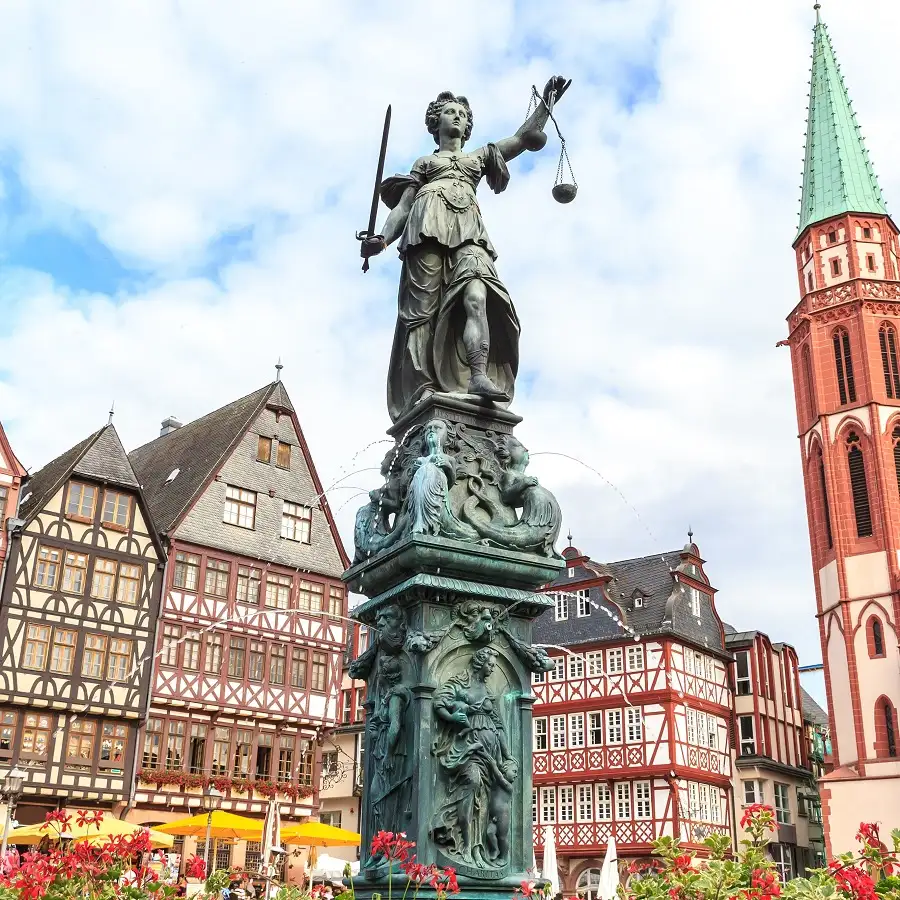
Day 1
Arrive Frankfurt
Day 1
Arrive Frankfurt


To Be Determined
Airport Transfer
Frankfurt has one main airport, Frankfurt Airport, where most visitors arrive. Taxis are available directly at the terminal exit, or you can arrange a private transfer for added convenience. The cheapest and fastest way to reach central Frankfurt is by train, as there is a train station located within the airport (just follow the signs). The highspeed InterCity trains, Regional trains, and SBahn trains all have direct routes from the airport to the main train station in Frankfurt (Frankfurt Hbf). Tickets for the ICE trains cost about 15 EUR while tickets for Regional trains and Sbahn are only about 5 EUR. The journey takes approximately 10 to 15 minutes. From the Frankfurt main rail station, you can take a much cheaper taxi or Uber to your hotel, or perhaps even walk. Please note that if flying into the somewhat deceptively named Frankfurt-Hahn Airport, you will need to arrange bus or other transportation to Frankfurt. This airport is actually located about a 90 minute drive from central Frankfurt.

Day 1
Arrive Frankfurt


Day 1
Arrive Frankfurt



To Be Determined:
Airport Transfer
Mid-Day/Afternoon:
City Center


Day 2
Frankfurt
Day 2
Frankfurt



9:00 AM - 3:00 PM
Rhine River, Guided
Journey along the romantic Rhine on a full-day guided excursion from Frankfurt and take in the UNESCO-listed wonders of the Rhine Valley. Set sail on a river boat from the town of Rüdesheim and cruise past sweeping vineyards, medieval towns and mountaintop castles.

Rhine River Gorge
Floating a boat is the best way through the German lore of this UNESCO-protected valley
Show More

Rhine River Gorge
Floating a boat is the best way through the German lore of this UNESCO-protected valley
Show More

Rhine River Gorge
Floating a boat is the best way through the German lore of this UNESCO-protected valley
Show More

Rhine River Gorge
Floating a boat is the best way through the German lore of this UNESCO-protected valley
Show More

Rhine River Gorge
Floating a boat is the best way through the German lore of this UNESCO-protected valley
Show More
prev
next

Day 2
Frankfurt

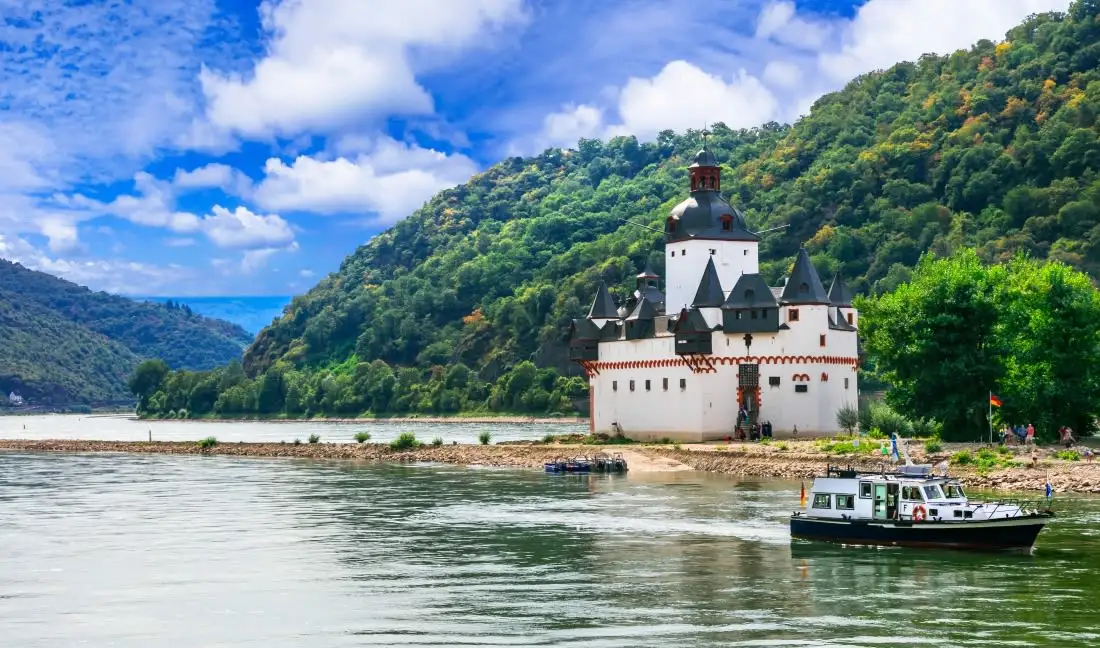
Rhine River Gorge
 Highlight of Rhine River, Guided
Highlight of Rhine River, GuidedFloating a boat is the best way through the German lore of this UNESCO-protected valley
The UNESCO-protected Rhine River Gorge, between the towns of Koblenz and Bingen, is often referred to as the Romantic Rhine. Its inspiring natural beauty, steep vineyards, many castles, and Roman-founded towns that dot its banks draw foreigners and Germans alike. Picturesque views, fairy-tale castles perched on high cliffs, and the Lorelei Rock, where legends say a siren lured sailors to their doom await you. Well, except the siren...

Rhine River Gorge
 Highlight of Rhine River, Guided
Highlight of Rhine River, GuidedFloating a boat is the best way through the German lore of this UNESCO-protected valley
The UNESCO-protected Rhine River Gorge, between the towns of Koblenz and Bingen, is often referred to as the Romantic Rhine. Its inspiring natural beauty, steep vineyards, many castles, and Roman-founded towns that dot its banks draw foreigners and Germans alike. Picturesque views, fairy-tale castles perched on high cliffs, and the Lorelei Rock, where legends say a siren lured sailors to their doom await you. Well, except the siren...

Rhine River Gorge
 Highlight of Rhine River, Guided
Highlight of Rhine River, GuidedFloating a boat is the best way through the German lore of this UNESCO-protected valley
The UNESCO-protected Rhine River Gorge, between the towns of Koblenz and Bingen, is often referred to as the Romantic Rhine. Its inspiring natural beauty, steep vineyards, many castles, and Roman-founded towns that dot its banks draw foreigners and Germans alike. Picturesque views, fairy-tale castles perched on high cliffs, and the Lorelei Rock, where legends say a siren lured sailors to their doom await you. Well, except the siren...

Rhine River Gorge
 Highlight of Rhine River, Guided
Highlight of Rhine River, GuidedFloating a boat is the best way through the German lore of this UNESCO-protected valley
The UNESCO-protected Rhine River Gorge, between the towns of Koblenz and Bingen, is often referred to as the Romantic Rhine. Its inspiring natural beauty, steep vineyards, many castles, and Roman-founded towns that dot its banks draw foreigners and Germans alike. Picturesque views, fairy-tale castles perched on high cliffs, and the Lorelei Rock, where legends say a siren lured sailors to their doom await you. Well, except the siren...

Rhine River Gorge
 Highlight of Rhine River, Guided
Highlight of Rhine River, GuidedFloating a boat is the best way through the German lore of this UNESCO-protected valley
The UNESCO-protected Rhine River Gorge, between the towns of Koblenz and Bingen, is often referred to as the Romantic Rhine. Its inspiring natural beauty, steep vineyards, many castles, and Roman-founded towns that dot its banks draw foreigners and Germans alike. Picturesque views, fairy-tale castles perched on high cliffs, and the Lorelei Rock, where legends say a siren lured sailors to their doom await you. Well, except the siren...
prev
next


Day 3
Frankfurt to Cologne
Day 3
Frankfurt to Cologne






9:15 AM
Transfer to Rail Station
Most trains depart from Frankfurt hbf (i.e. Frankfurt Main Station) station, the largest station in the city. Before spending money on a transfer, be sure to check whether your hotel is within easy walking distance. Also consider that public transport is the cheapest and sometimes fastest option. If staying at a hotel, they can order a reliable taxi. Some private transfers will even help with your bags. Uber is also available for those with the app.

Day 3
Frankfurt to Cologne


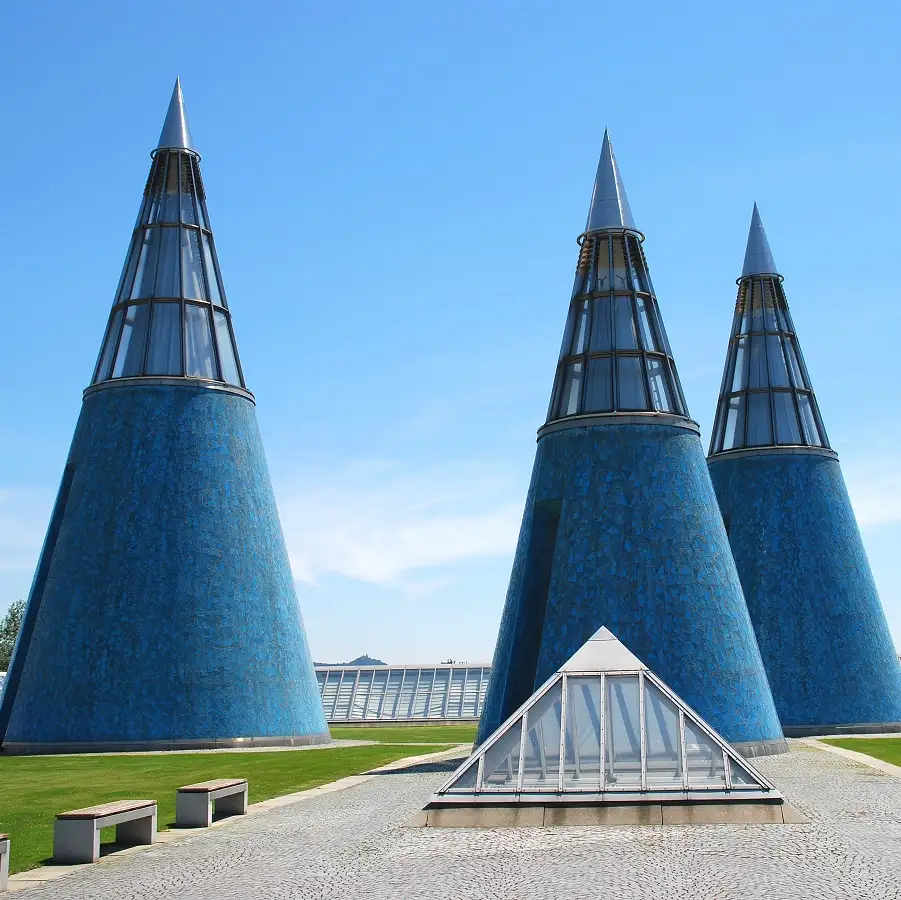
Day 4
Cologne
Day 4
Cologne


Morning to Afternoon
Bonn Excursion
Take a less than half hour train ride to what was until the fall of the Berlin Wall the capital of the Federal Republic of Germany (West Germany). Bonn has reverted back to provincial status, but plenty remains to see of its former capital status, including the modern government district and a general spread of fascinating museums, all located near a very attractive stretch of the Rhine River. The city also makes the most of its associations with Beethoven, who was born here and whose birthplace has been turned into a museum also. You can also embark upon the Weg der Demokratie ("Path of Democracy"), a signposted walkthrough of sites associated with Bonn's period as the federal capital.

Haus der Geschichte
Take a trip back into the recent past and learn about the old West Germany.
Show More

Kunstmuseum Bonn
Experience a unique gallery space filled with groundbreaking modern art.
Show More

Beethoven-Haus
See the home where Ludwig van Beethoven was born in an attic room in 1770.
Show More

City Hall (Rathaus)
See one of the Bonn's liveliest squares in front of the historic town hall.
Show More

Haus der Geschichte
Take a trip back into the recent past and learn about the old West Germany.
Show More

Kunstmuseum Bonn
Experience a unique gallery space filled with groundbreaking modern art.
Show More

Beethoven-Haus
See the home where Ludwig van Beethoven was born in an attic room in 1770.
Show More

City Hall (Rathaus)
See one of the Bonn's liveliest squares in front of the historic town hall.
Show More
prev
next

Day 4
Cologne


Haus der Geschichte
 Highlight of Bonn Excursion
Highlight of Bonn ExcursionTake a trip back into the recent past and learn about the old West Germany.
For modern history buffs, the Haus der Geschichte is a museum dedicated to the story of the German state since 1945, looking at the social and economic rebirth of a nation in ruins.

Kunstmuseum Bonn
 Highlight of Bonn Excursion
Highlight of Bonn ExcursionExperience a unique gallery space filled with groundbreaking modern art.
The Kunstmuseum is a splendid hub of German art, showcasing bright works by Rhineland expressionist August Macke, challenging pieces by abstract painter Ernst Wilhelm Nay, and slabs of contemporary colour by modernist Thomas Rentmeister. Its starkly beautiful modernist interior also contains a substantial collection of post-1945 German art.
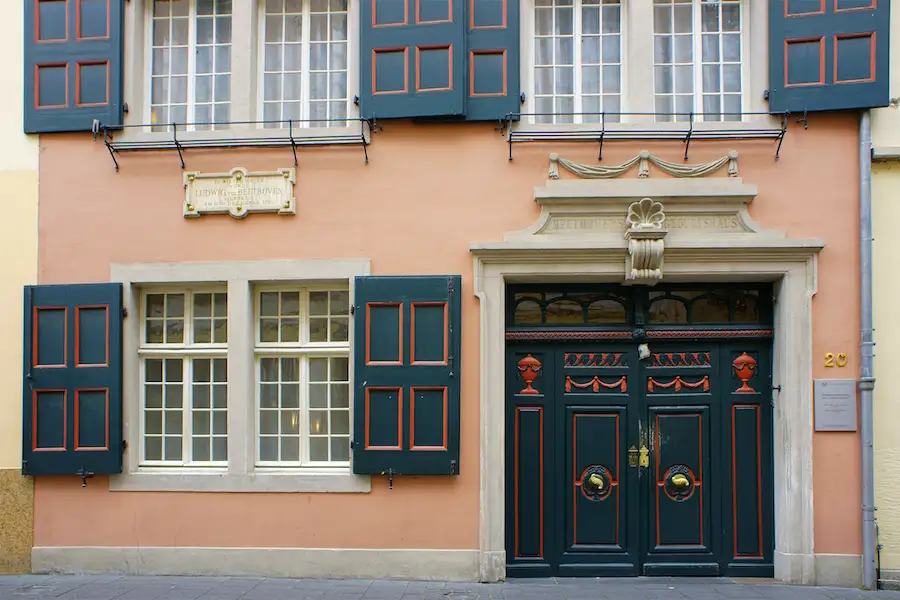
Beethoven-Haus
 Highlight of Bonn Excursion
Highlight of Bonn ExcursionSee the home where Ludwig van Beethoven was born in an attic room in 1770.
Beethoven was born here thanks to his father's position as court musician with the Electorate of Cologne, whose capital Bonn was at the time. You'll see family portraits, pianos, Beethoven's death mask and ear trumpets, and the room he was born in. Other than the very creaky wood-floors, the museum is without listening stations as you'd expect, so you have to be a true Beethoven admirer to truly appreciate the exhibits by themselves. But thankfully there is music and his life story told on the audio guide, which we highly suggest if you want to get the most out of the museum.
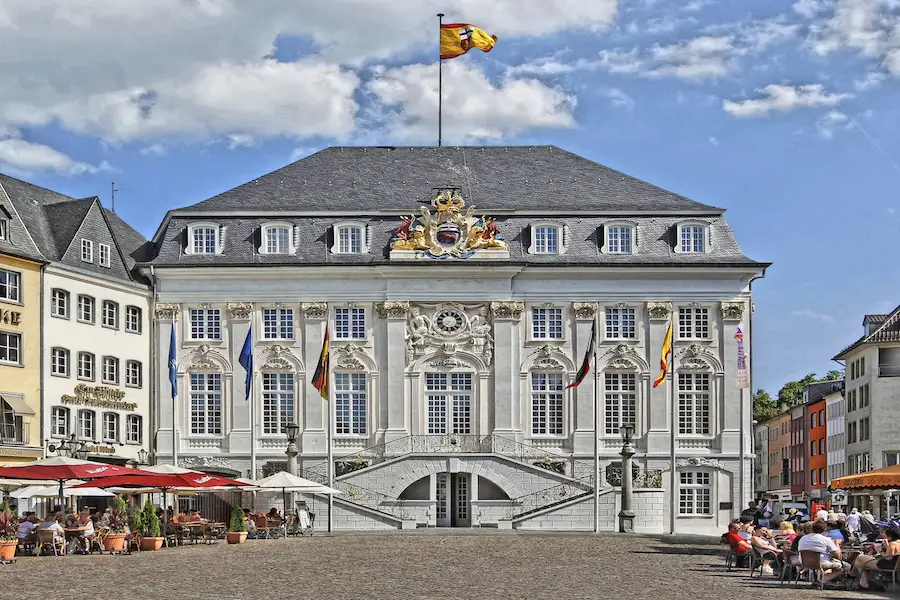
City Hall (Rathaus)
 Highlight of Bonn Excursion
Highlight of Bonn ExcursionSee one of the Bonn's liveliest squares in front of the historic town hall.
The Bonn town hall is an attractive 18th century roccoco building. Visiting VIPs during the town's halycon days as federal capital, like Charles de Gaulle and John F. Kennedy, would roll out in front of the crowds on the Rathaus steps. Today the square in front of the town hall is filled with cafes and is a favorite gathering place for both locals and visitors.

Haus der Geschichte
 Highlight of Bonn Excursion
Highlight of Bonn ExcursionTake a trip back into the recent past and learn about the old West Germany.
For modern history buffs, the Haus der Geschichte is a museum dedicated to the story of the German state since 1945, looking at the social and economic rebirth of a nation in ruins.

Kunstmuseum Bonn
 Highlight of Bonn Excursion
Highlight of Bonn ExcursionExperience a unique gallery space filled with groundbreaking modern art.
The Kunstmuseum is a splendid hub of German art, showcasing bright works by Rhineland expressionist August Macke, challenging pieces by abstract painter Ernst Wilhelm Nay, and slabs of contemporary colour by modernist Thomas Rentmeister. Its starkly beautiful modernist interior also contains a substantial collection of post-1945 German art.

Beethoven-Haus
 Highlight of Bonn Excursion
Highlight of Bonn ExcursionSee the home where Ludwig van Beethoven was born in an attic room in 1770.
Beethoven was born here thanks to his father's position as court musician with the Electorate of Cologne, whose capital Bonn was at the time. You'll see family portraits, pianos, Beethoven's death mask and ear trumpets, and the room he was born in. Other than the very creaky wood-floors, the museum is without listening stations as you'd expect, so you have to be a true Beethoven admirer to truly appreciate the exhibits by themselves. But thankfully there is music and his life story told on the audio guide, which we highly suggest if you want to get the most out of the museum.

City Hall (Rathaus)
 Highlight of Bonn Excursion
Highlight of Bonn ExcursionSee one of the Bonn's liveliest squares in front of the historic town hall.
The Bonn town hall is an attractive 18th century roccoco building. Visiting VIPs during the town's halycon days as federal capital, like Charles de Gaulle and John F. Kennedy, would roll out in front of the crowds on the Rathaus steps. Today the square in front of the town hall is filled with cafes and is a favorite gathering place for both locals and visitors.
prev
next

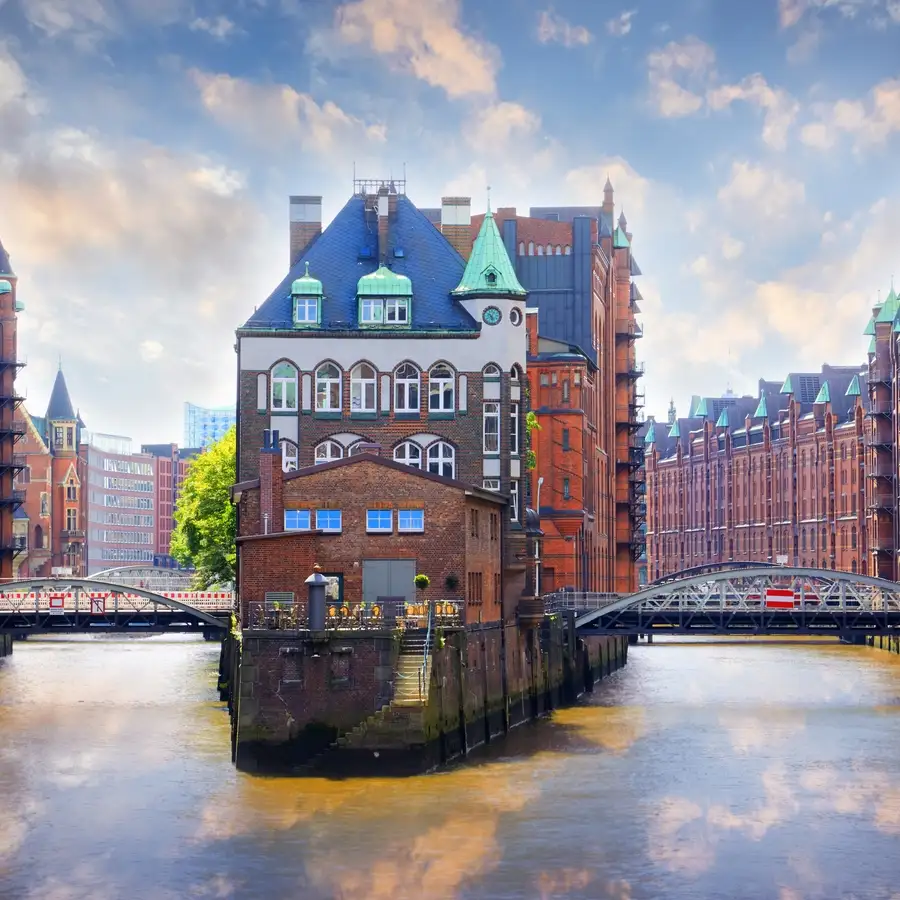
Day 5
Cologne to Hamburg
Day 5
Cologne to Hamburg





8:10 AM
Taxi Dropoff at Rail Station
There are two main rail stations where visitors depart from Cologne. You will likely depart from the Cologne main station (Köln hbf, i.e hauptbahnhof), but be careful to check that you should not depart from the station Messe/Deutz, which is located just across the river. Before spending money on a transfer, be sure to check whether your hotel is within easy walking distance. Also consider that public transport is the cheapest and sometimes fastest option. If staying at a hotel, they can order a reliable taxi. Some private transfers will even help with your bags. Uber is also available for those with the app.

Day 5
Cologne to Hamburg


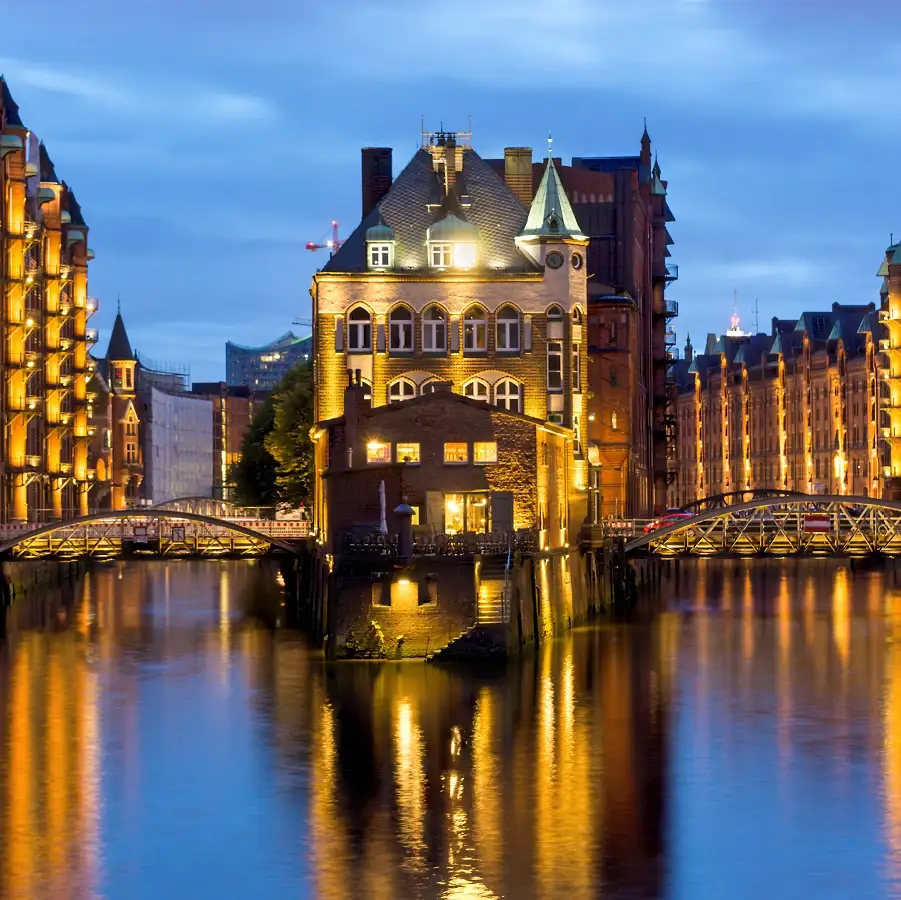
Day 6
Hamburg
Day 6
Hamburg




Morning/Mid-Day
Speicherstadt
The warehouses of Speicherstadt helped make Hamburg a world-class port in the late 19th century, and despite severe damage in Allied bombing raids during the WWII, it's been restored to its pristine best. Here you'll find the incredibly instructive nine-floor Maritime Museum, the world's largest model railway exhibition at Miniatur Wunderland, and the city's latest architectural icon, the Elbphilharmonie. Literally "Warehouse City," Speicherstadt contains the world's largest complex of warehouses, spanning an area of 260,000 square meters (a little over 64 acres). It was built on the Elbe river between 1883 and the late 1920s on thousands of oak piles. Its beautiful neo-gothic brick architecture makes for a curious contrast to the modern steel-and-glass constructions of neighbouring HafenCity.

Elbphilharmonie Hamburg
See one of the largest and most acoustically advanced concert halls in the entire world, built on top of an old warehouse.
Show More

Cap San Diego
Experience a by-gone era of the high seas on this former cargo ship.
Show More

Minatur Wunderland
Experience the world in miniature on the planet's largest model railroad system.
Show More

International Maritime Museum Hamburg
Get lost in the dizzyingly labryinthine Maritime Museum, one of the best of its kind.
Show More

Elbphilharmonie Hamburg
See one of the largest and most acoustically advanced concert halls in the entire world, built on top of an old warehouse.
Show More

Cap San Diego
Experience a by-gone era of the high seas on this former cargo ship.
Show More

Minatur Wunderland
Experience the world in miniature on the planet's largest model railroad system.
Show More

International Maritime Museum Hamburg
Get lost in the dizzyingly labryinthine Maritime Museum, one of the best of its kind.
Show More
prev
next

Day 6
Hamburg


Elbphilharmonie Hamburg
 Highlight of Speicherstadt
Highlight of SpeicherstadtSee one of the largest and most acoustically advanced concert halls in the entire world, built on top of an old warehouse.
Hamburg boasts one of the largest and most acoustically advanced concert halls in the world in the Elbphilharmonie. Built onto the top of an old warehouse at a cost of 789 million EUR (a bit more than the estimated 200 million EUR) and opened in 2017, you can be sure to get your money's worth from a performance here. The glassy construction resembles a hoisted sail or a wave. The Elbphilharmonie has three concert venues, including the illustrious Great Concert Hall that accommodates 2,100 visitors seated to surround the performers. About 10,000 individually installed microshaped drywall plates disperse sound waves. It's a sight, and sound to behold.
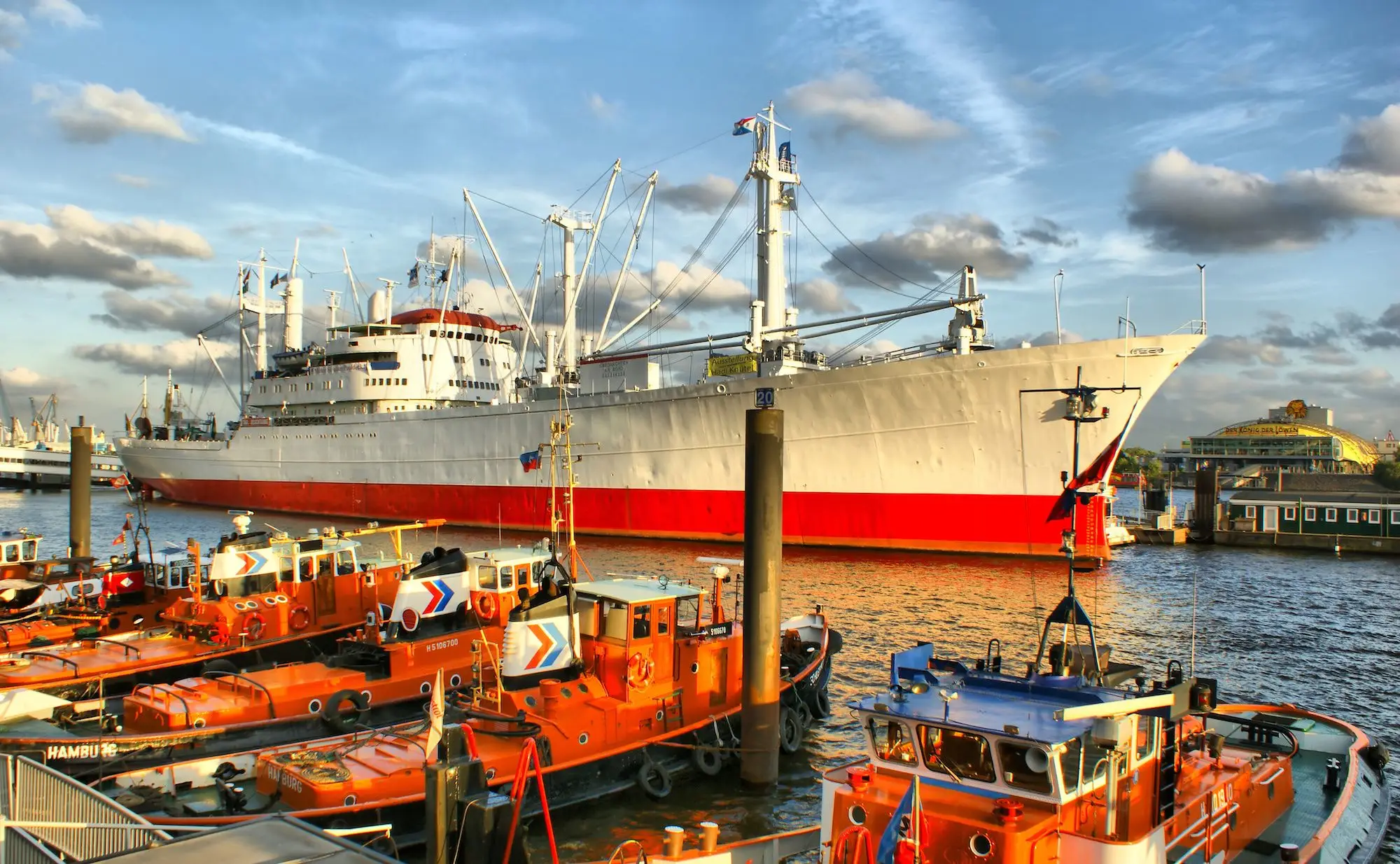
Cap San Diego
 Highlight of Speicherstadt
Highlight of SpeicherstadtExperience a by-gone era of the high seas on this former cargo ship.
The ship is docked on the Elbe River within a short walk of the Speicherstadt. Built in 1961, it has been converted into a maritime museum having been made obsolescent by the massive container ships of today. Visiting the ship is a must for those that have a technical interest in sea-faring and naval engineering, but it is also interesting for those with a more general interest in how life was lived on the high seas. So in addition to massive engine and mechanical rooms, you'll also see cabins, dining quarters, a swimming pool, and much more.
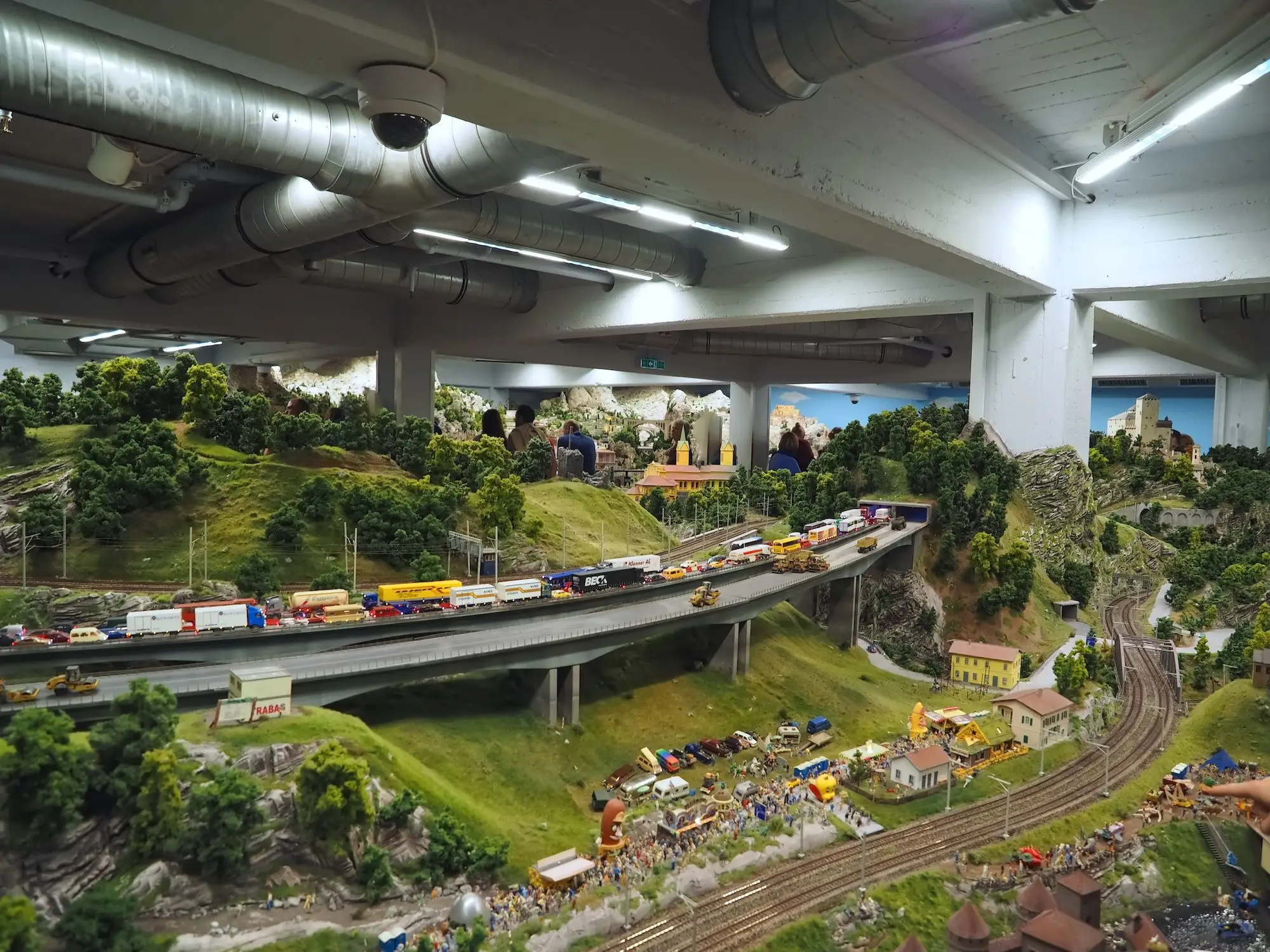
Minatur Wunderland
 Highlight of Speicherstadt
Highlight of SpeicherstadtExperience the world in miniature on the planet's largest model railroad system.
Whether you're a model train enthusiast or not, you can't help but be mesmerized by the world's largest model railroad system at Minatur Wunderland (Miniature Wonderland). This mind-boggling exhibit goes into breathtaking detail to create a bewildering number of scenes. If you're well traveled in Europe, you'll instantly recognize some of the most iconic places on the continent. Tiny, and humourous, details populate the exhibit, such as the man leading his pigs into Rome's Termini rail station, or the nude flash mob on a Swiss mountain side. The Wonderland includes a restaurant and one of the best gift shops in Hamburg.
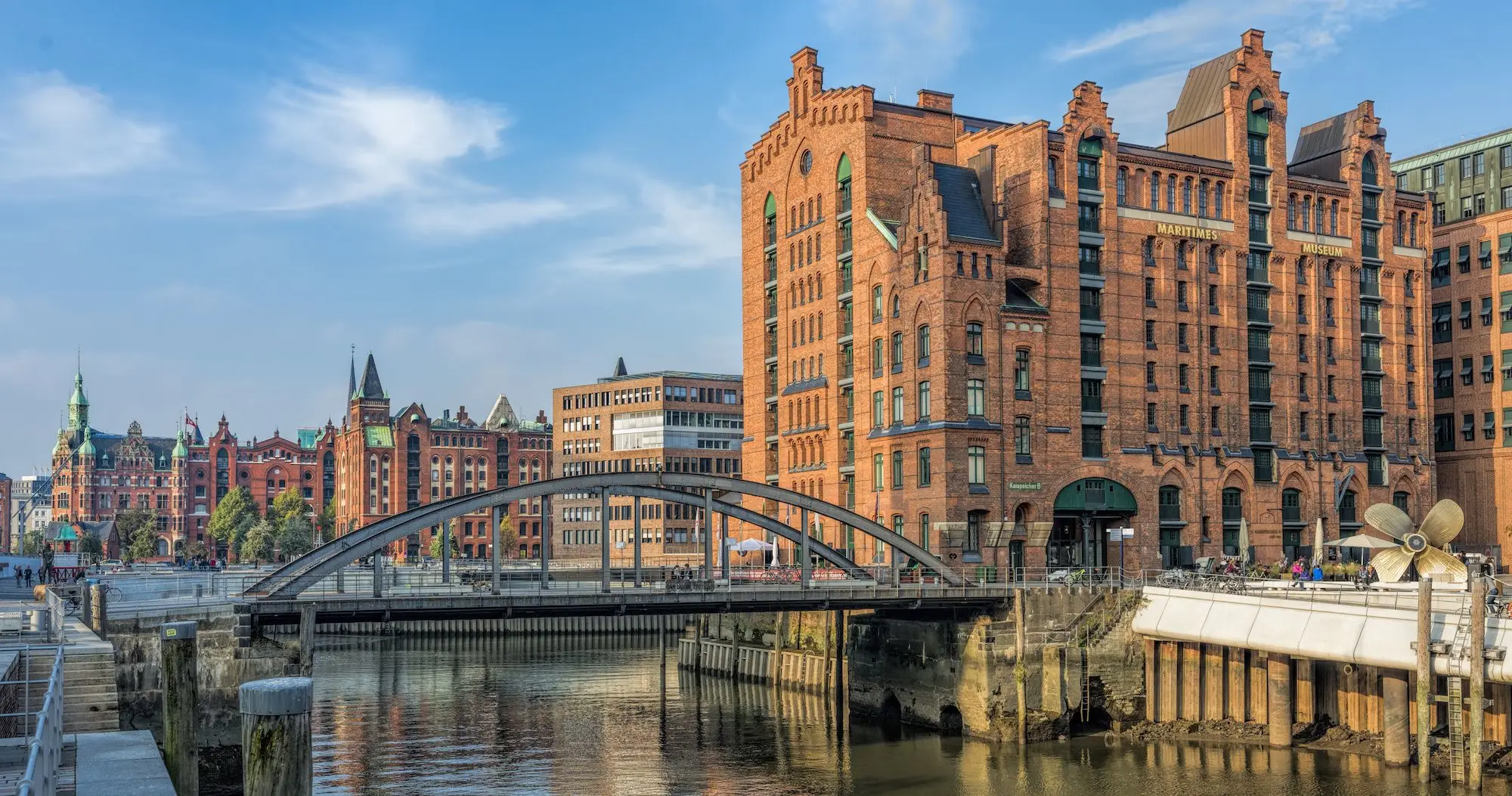
International Maritime Museum Hamburg
 Highlight of Speicherstadt
Highlight of SpeicherstadtGet lost in the dizzyingly labryinthine Maritime Museum, one of the best of its kind.
You could spend several days on the nine "decks" of the Maritime Museum, exploring three thousand years of extraordinarily precious exhibits. Highlights include the deck dedicated to German military navel history, and the exhibit explaining the Cape Horn Captains' Brotherhood - captains who sailed a commercial sailing ships around the notorious waters at Cape Horn. Pick up some brilliant trivial knowledge as well, including the tale of Mississippi boat pilots who would measure the river depth beneath them; when they had 3.65m, indicating there was no danger of grounding, they would exclaim "Mark twain!" One of those pilots was then know as Samuel Langhorne Clemens.

Elbphilharmonie Hamburg
 Highlight of Speicherstadt
Highlight of SpeicherstadtSee one of the largest and most acoustically advanced concert halls in the entire world, built on top of an old warehouse.
Hamburg boasts one of the largest and most acoustically advanced concert halls in the world in the Elbphilharmonie. Built onto the top of an old warehouse at a cost of 789 million EUR (a bit more than the estimated 200 million EUR) and opened in 2017, you can be sure to get your money's worth from a performance here. The glassy construction resembles a hoisted sail or a wave. The Elbphilharmonie has three concert venues, including the illustrious Great Concert Hall that accommodates 2,100 visitors seated to surround the performers. About 10,000 individually installed microshaped drywall plates disperse sound waves. It's a sight, and sound to behold.

Cap San Diego
 Highlight of Speicherstadt
Highlight of SpeicherstadtExperience a by-gone era of the high seas on this former cargo ship.
The ship is docked on the Elbe River within a short walk of the Speicherstadt. Built in 1961, it has been converted into a maritime museum having been made obsolescent by the massive container ships of today. Visiting the ship is a must for those that have a technical interest in sea-faring and naval engineering, but it is also interesting for those with a more general interest in how life was lived on the high seas. So in addition to massive engine and mechanical rooms, you'll also see cabins, dining quarters, a swimming pool, and much more.

Minatur Wunderland
 Highlight of Speicherstadt
Highlight of SpeicherstadtExperience the world in miniature on the planet's largest model railroad system.
Whether you're a model train enthusiast or not, you can't help but be mesmerized by the world's largest model railroad system at Minatur Wunderland (Miniature Wonderland). This mind-boggling exhibit goes into breathtaking detail to create a bewildering number of scenes. If you're well traveled in Europe, you'll instantly recognize some of the most iconic places on the continent. Tiny, and humourous, details populate the exhibit, such as the man leading his pigs into Rome's Termini rail station, or the nude flash mob on a Swiss mountain side. The Wonderland includes a restaurant and one of the best gift shops in Hamburg.

International Maritime Museum Hamburg
 Highlight of Speicherstadt
Highlight of SpeicherstadtGet lost in the dizzyingly labryinthine Maritime Museum, one of the best of its kind.
You could spend several days on the nine "decks" of the Maritime Museum, exploring three thousand years of extraordinarily precious exhibits. Highlights include the deck dedicated to German military navel history, and the exhibit explaining the Cape Horn Captains' Brotherhood - captains who sailed a commercial sailing ships around the notorious waters at Cape Horn. Pick up some brilliant trivial knowledge as well, including the tale of Mississippi boat pilots who would measure the river depth beneath them; when they had 3.65m, indicating there was no danger of grounding, they would exclaim "Mark twain!" One of those pilots was then know as Samuel Langhorne Clemens.
prev
next


Day 7
Hamburg to Berlin
Day 7
Hamburg to Berlin





Morning
Emigration Museum
The BallinStadt Emigration Museum, located in the Veddel quarter of the borough of Hamburg Mitte, is a testament to Hamburg's importance in the 19th and 20th centuries as a marine gateway to the rest of the world. Around five million European emigrants left their homes at this port during that time to travel to greener pastures in America and other parts of the New World. This museum stands in order to tell their story and, perhaps, that of your own ancestors.

Day 7
Hamburg to Berlin



Day 8
Berlin
Day 8
Berlin



9:00 AM - 12:00 PM
Guided Walking Tour of Berlin
On this 3 hour tour, your guide will show you the highlights of Berlin and help you understand what makes this city so unique. Sites visited will include the boulevard Unter den Linden, the Gendarmenmarkt, Check Point Charlie, remnants of the Berlin Wall, Potsdamer Platz, the Holocaust Memorial, the Brandenburg Gate, and the Reichstag.

Brandenburg Gate
Quadriga. Hey, There's a Word to Know When Learning About this Historic Gate
Show More

Reichstag
Make your way to the top of the dome enjoying amazing views and looking down at debating members of the German Parliament below.
Show More

Brandenburg Gate
Quadriga. Hey, There's a Word to Know When Learning About this Historic Gate
Show More

Reichstag
Make your way to the top of the dome enjoying amazing views and looking down at debating members of the German Parliament below.
Show More

Brandenburg Gate
Quadriga. Hey, There's a Word to Know When Learning About this Historic Gate
Show More

Reichstag
Make your way to the top of the dome enjoying amazing views and looking down at debating members of the German Parliament below.
Show More
prev
next

Day 8
Berlin

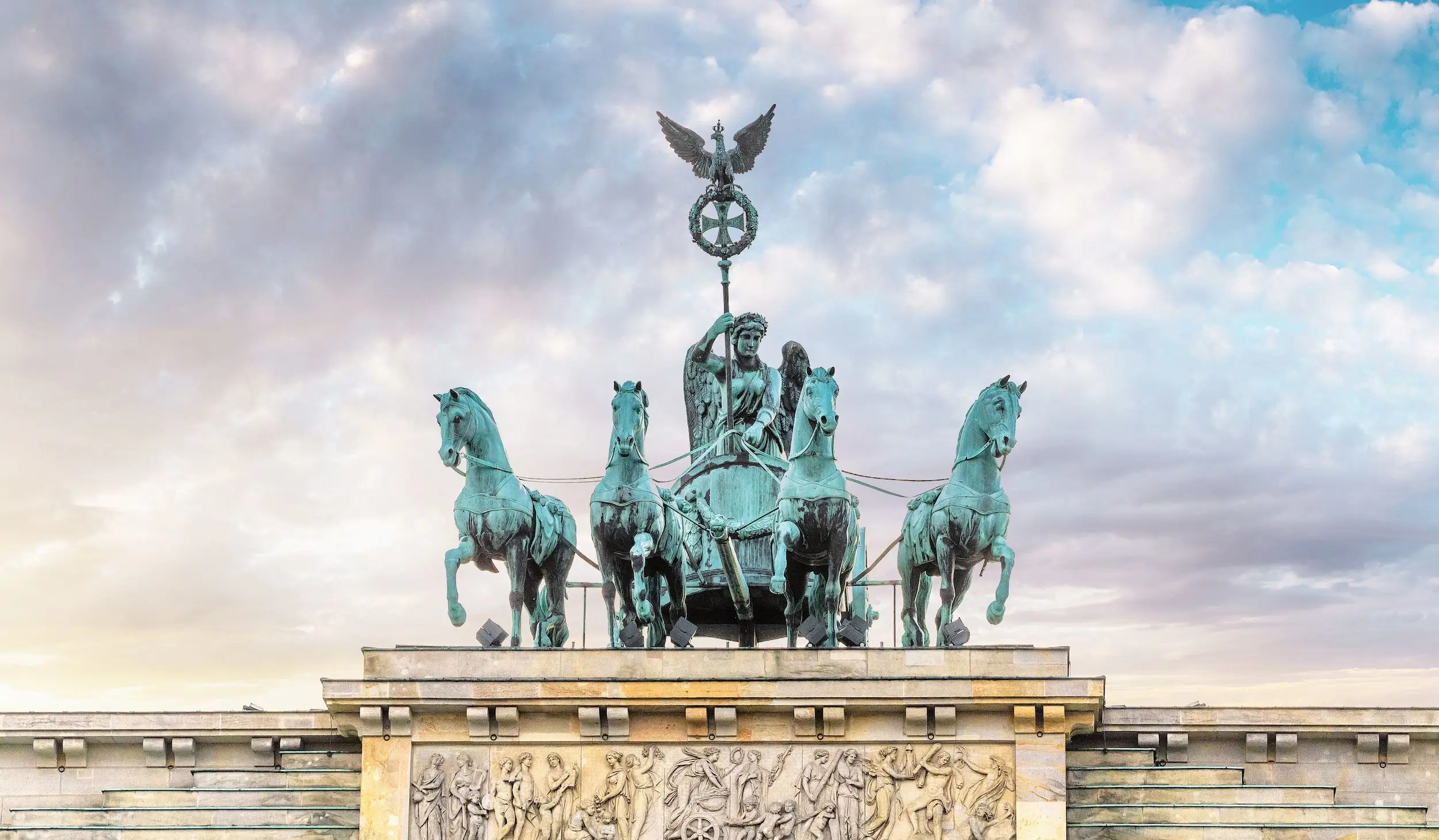
Brandenburg Gate
 Highlight of Guided Walking Tour of Berlin
Highlight of Guided Walking Tour of BerlinQuadriga. Hey, There's a Word to Know When Learning About this Historic Gate
The Brandenburg Gate was built as a symbol of peace, perverted into a symbol of power by the Nazis, and became a symbol of division during the Cold War. Now, however, it is a symbol of reunification. Completed in 1791, it was topped by the quadriga, a chariot drawn by four horses driven by the goddess of peace. Napoleon seized the quadriga as a spoil of war, but after his defeat, it was returned to the city and met by cheering crowds along the way, transforming the goddess of peace into a goddess of victory, holding a Germanic cross.

Reichstag
 Highlight of Guided Walking Tour of Berlin
Highlight of Guided Walking Tour of BerlinMake your way to the top of the dome enjoying amazing views and looking down at debating members of the German Parliament below.
Officially, the Reichstag is actually the Bundestag, which means the federal parliament. The Reichstag was reduced to a ruined shell by arson in 1933 and by World War II fighting, but it was rebuilt with a striking egg-shaped glass dome. Visitors are given a free audio guide that discusses the building’s history and architecture, while also orientating you to the sites of Berlin. It is an excellent introduction to the city. Note that it is usually necessary to book well in advance!

Brandenburg Gate
 Highlight of Guided Walking Tour of Berlin
Highlight of Guided Walking Tour of BerlinQuadriga. Hey, There's a Word to Know When Learning About this Historic Gate
The Brandenburg Gate was built as a symbol of peace, perverted into a symbol of power by the Nazis, and became a symbol of division during the Cold War. Now, however, it is a symbol of reunification. Completed in 1791, it was topped by the quadriga, a chariot drawn by four horses driven by the goddess of peace. Napoleon seized the quadriga as a spoil of war, but after his defeat, it was returned to the city and met by cheering crowds along the way, transforming the goddess of peace into a goddess of victory, holding a Germanic cross.

Reichstag
 Highlight of Guided Walking Tour of Berlin
Highlight of Guided Walking Tour of BerlinMake your way to the top of the dome enjoying amazing views and looking down at debating members of the German Parliament below.
Officially, the Reichstag is actually the Bundestag, which means the federal parliament. The Reichstag was reduced to a ruined shell by arson in 1933 and by World War II fighting, but it was rebuilt with a striking egg-shaped glass dome. Visitors are given a free audio guide that discusses the building’s history and architecture, while also orientating you to the sites of Berlin. It is an excellent introduction to the city. Note that it is usually necessary to book well in advance!

Brandenburg Gate
 Highlight of Guided Walking Tour of Berlin
Highlight of Guided Walking Tour of BerlinQuadriga. Hey, There's a Word to Know When Learning About this Historic Gate
The Brandenburg Gate was built as a symbol of peace, perverted into a symbol of power by the Nazis, and became a symbol of division during the Cold War. Now, however, it is a symbol of reunification. Completed in 1791, it was topped by the quadriga, a chariot drawn by four horses driven by the goddess of peace. Napoleon seized the quadriga as a spoil of war, but after his defeat, it was returned to the city and met by cheering crowds along the way, transforming the goddess of peace into a goddess of victory, holding a Germanic cross.

Reichstag
 Highlight of Guided Walking Tour of Berlin
Highlight of Guided Walking Tour of BerlinMake your way to the top of the dome enjoying amazing views and looking down at debating members of the German Parliament below.
Officially, the Reichstag is actually the Bundestag, which means the federal parliament. The Reichstag was reduced to a ruined shell by arson in 1933 and by World War II fighting, but it was rebuilt with a striking egg-shaped glass dome. Visitors are given a free audio guide that discusses the building’s history and architecture, while also orientating you to the sites of Berlin. It is an excellent introduction to the city. Note that it is usually necessary to book well in advance!
prev
next

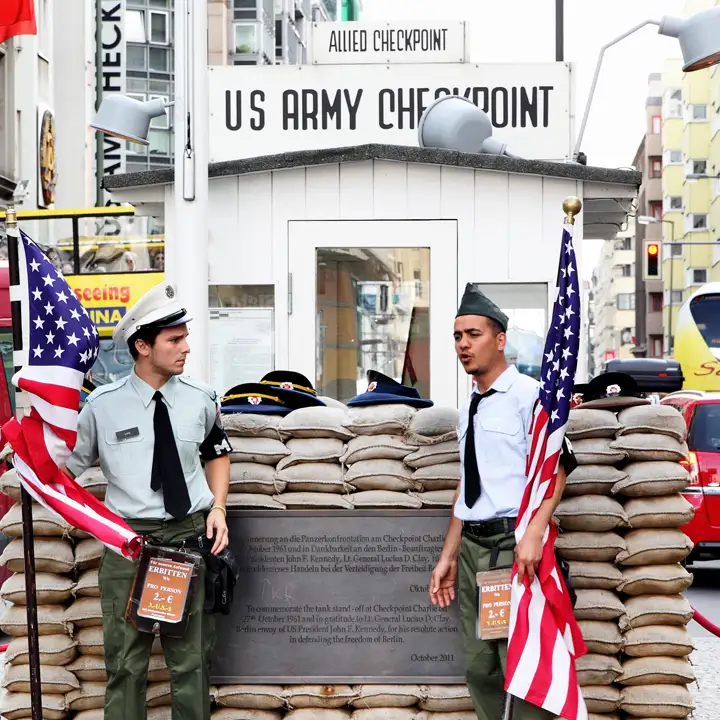
Day 9
Berlin
Day 9
Berlin



Afternoon/Late Afternoon
Checkpoint Charlie
The best-known Berlin Wall crossing point between East Berlin and West Berlin during the Cold War, Checkpoint Charlie was the main gateway between the two Berlins for most non-Germans. Next to it is the Mauermuseum recounting the history of the Berlin Wall, while a few hundred yards away is the Topography of Terror depicting the history of the Nazi regime. Nearby, the Jewish Museum explores the fascinating history of Germany's Jewish heritage in a striking modern building - uneven floors, empty spaces, and sharp zig-zags reflect its turbulent experience in Germany.

Trabi Museum
Sit behind the wheel of East Germany's infamously toxic Trabi.
Show More

Topography of Terror
Learn about the horrors of Nazism and the security apparatus it used to enforce its will in this documentation center.
Show More

Jewish Museum
Unveil a fascinating story of triumph, tragedy, and also everyday life in Germany's leading Jewish history museum.
Show More

Trabi Museum
Sit behind the wheel of East Germany's infamously toxic Trabi.
Show More

Topography of Terror
Learn about the horrors of Nazism and the security apparatus it used to enforce its will in this documentation center.
Show More

Jewish Museum
Unveil a fascinating story of triumph, tragedy, and also everyday life in Germany's leading Jewish history museum.
Show More

Trabi Museum
Sit behind the wheel of East Germany's infamously toxic Trabi.
Show More
prev
next

Day 9
Berlin


Trabi Museum
 Highlight of Checkpoint Charlie
Highlight of Checkpoint CharlieSit behind the wheel of East Germany's infamously toxic Trabi.
This little museum is devoted to East Germany's iconic product - the Trabant automobile. Here you'll learn to appreciate the “fewer parts means less trouble” principles of the fibreglass car.

Topography of Terror
 Highlight of Checkpoint Charlie
Highlight of Checkpoint CharlieLearn about the horrors of Nazism and the security apparatus it used to enforce its will in this documentation center.
The center has free admission. It is located on a site that headquartered Adolf Hitler's elite killers, the SS, the Gestapo secret police and the Reich Main Security Office, making it the main cog in the Nazi security regime. Standing there today in testament to the evil perpetrated during those years is the Topography of Terror, Germany’s most significant museum on the agents of Nazi terror.

Jewish Museum
 Highlight of Checkpoint Charlie
Highlight of Checkpoint CharlieUnveil a fascinating story of triumph, tragedy, and also everyday life in Germany's leading Jewish history museum.
The history of Germany’s once-thriving Jewish population and culture is brilliantly detailed behind American architect Daniel Libeskind’s equally brilliant and shimmering titanium-zinc facade.

Trabi Museum
 Highlight of Checkpoint Charlie
Highlight of Checkpoint CharlieSit behind the wheel of East Germany's infamously toxic Trabi.
This little museum is devoted to East Germany's iconic product - the Trabant automobile. Here you'll learn to appreciate the “fewer parts means less trouble” principles of the fibreglass car.

Topography of Terror
 Highlight of Checkpoint Charlie
Highlight of Checkpoint CharlieLearn about the horrors of Nazism and the security apparatus it used to enforce its will in this documentation center.
The center has free admission. It is located on a site that headquartered Adolf Hitler's elite killers, the SS, the Gestapo secret police and the Reich Main Security Office, making it the main cog in the Nazi security regime. Standing there today in testament to the evil perpetrated during those years is the Topography of Terror, Germany’s most significant museum on the agents of Nazi terror.

Jewish Museum
 Highlight of Checkpoint Charlie
Highlight of Checkpoint CharlieUnveil a fascinating story of triumph, tragedy, and also everyday life in Germany's leading Jewish history museum.
The history of Germany’s once-thriving Jewish population and culture is brilliantly detailed behind American architect Daniel Libeskind’s equally brilliant and shimmering titanium-zinc facade.

Trabi Museum
 Highlight of Checkpoint Charlie
Highlight of Checkpoint CharlieSit behind the wheel of East Germany's infamously toxic Trabi.
This little museum is devoted to East Germany's iconic product - the Trabant automobile. Here you'll learn to appreciate the “fewer parts means less trouble” principles of the fibreglass car.
prev
next


Day 10
Berlin to Dresden
Day 10
Berlin to Dresden





Morning
Charlottenburg Palace
Despite its many historic buildings, Berlin's modern architecture, constant construction, and hipness often make it feel like a thoroughly 21st century city. It is nice, therefore, to escape the bustle of the city by visiting the beautiful palace of Charlottenburg and its idyllic park and gardens. Constructed in 1696, the palace was nearly completely destroyed in World War II, but was lovingly restored to its baroque grandeur.

Museum Berggruen
Check out some Picasso paintings in this museum located on the tree-lined boulevard just opposite the palace entrance.
Show More

Charlottenburg Palace Park
Get pleasantly lost in the royal park surrounding the palace.
Show More

Charlottenburg Palace
Discover that German design isn't always sleek and efficient in this beautiful baroque palace built with its beautiful collections of art and furnishings.
Show More

Museum Berggruen
Check out some Picasso paintings in this museum located on the tree-lined boulevard just opposite the palace entrance.
Show More

Charlottenburg Palace Park
Get pleasantly lost in the royal park surrounding the palace.
Show More

Charlottenburg Palace
Discover that German design isn't always sleek and efficient in this beautiful baroque palace built with its beautiful collections of art and furnishings.
Show More

Museum Berggruen
Check out some Picasso paintings in this museum located on the tree-lined boulevard just opposite the palace entrance.
Show More
prev
next

Day 10
Berlin to Dresden

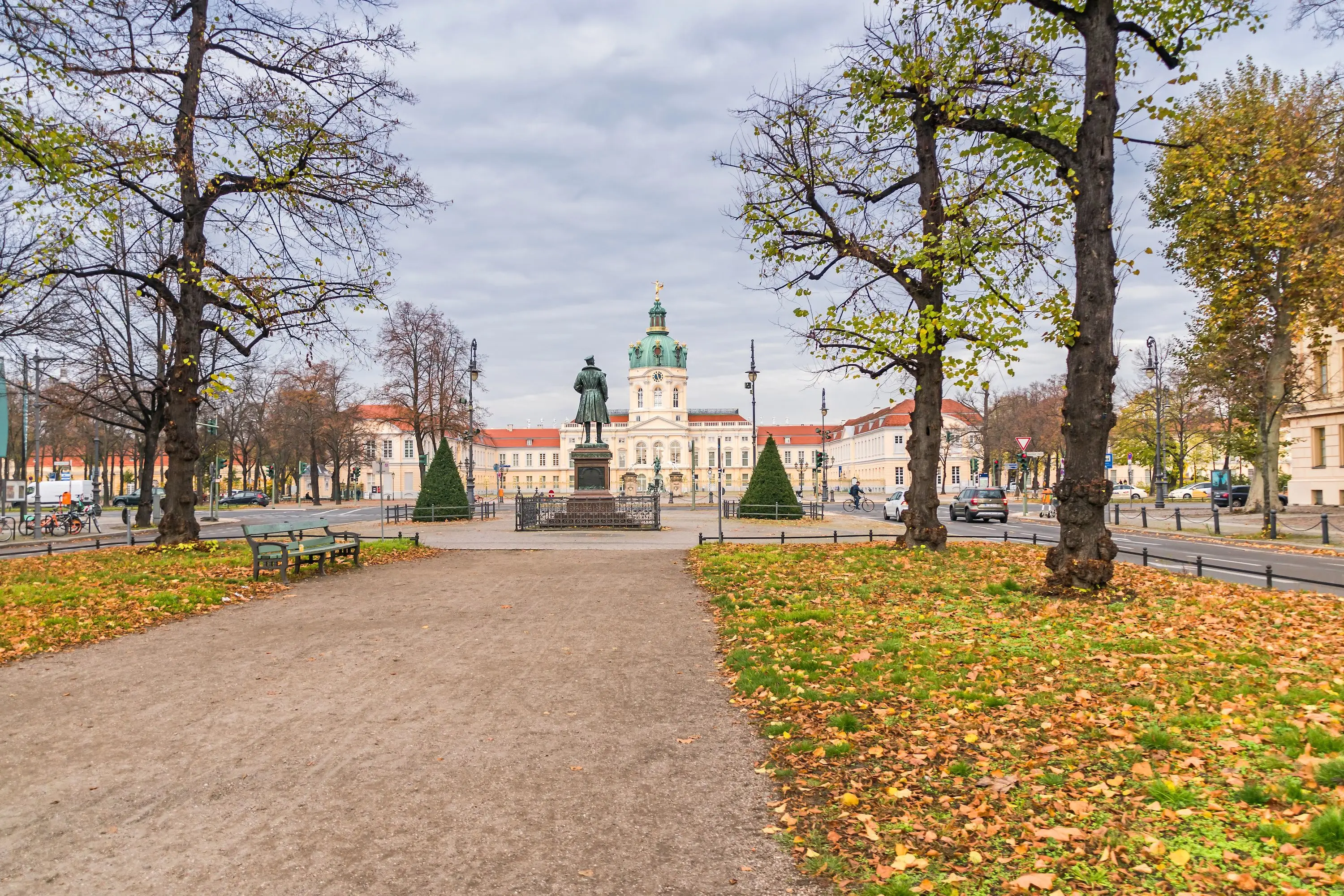
Museum Berggruen
 Highlight of Charlottenburg Palace
Highlight of Charlottenburg PalaceCheck out some Picasso paintings in this museum located on the tree-lined boulevard just opposite the palace entrance.
The musem holds a collection of rarely seen Picasso paintings, as well as other notable artwork, including some Cezannes, van Goghs and Klees. There are several other worthwhile museums, as well as cafes and beautiful villas all located nearby on the street known as Schloßtraße.
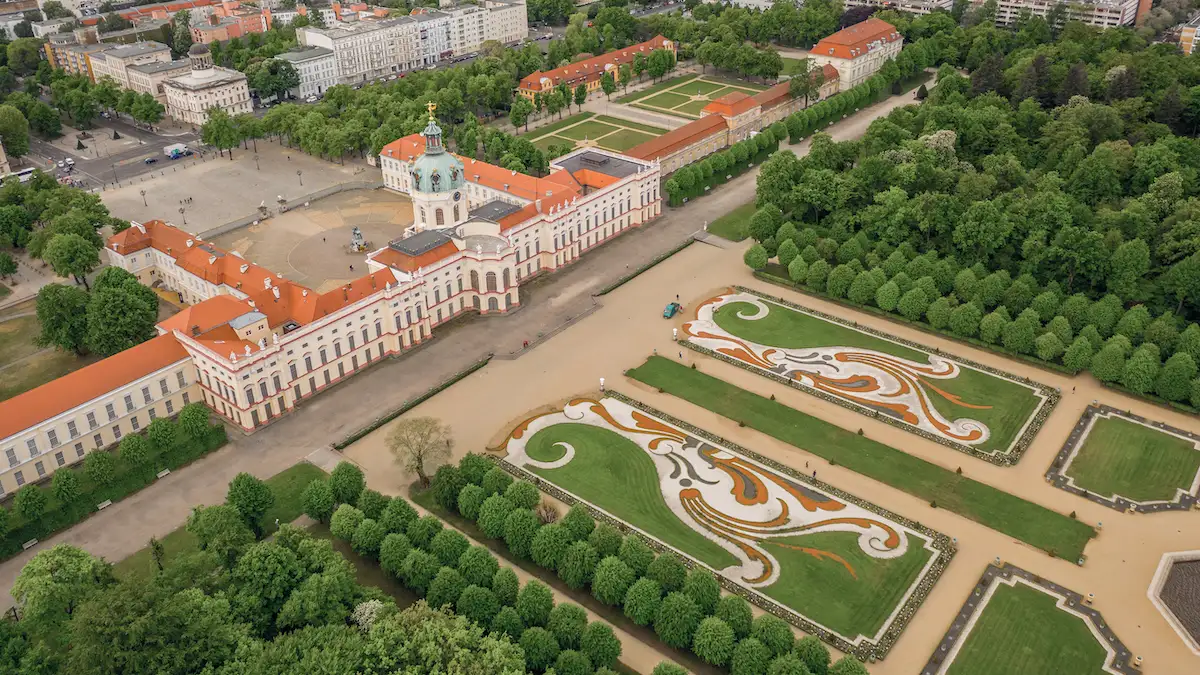
Charlottenburg Palace Park
 Highlight of Charlottenburg Palace
Highlight of Charlottenburg PalaceGet pleasantly lost in the royal park surrounding the palace.
The elegant formal Baroque garden directly adjacent to the palace has been restored to its original layout from the 1700's, complete with ornate fountains featuring replica antique sculptures. Beyond the gardens, you will find a delightfully relaxing forested park, which is criss-crossed by gravel paths and interspersed with canals and other waterways. It is a delight to explore either on foot or bicycle.
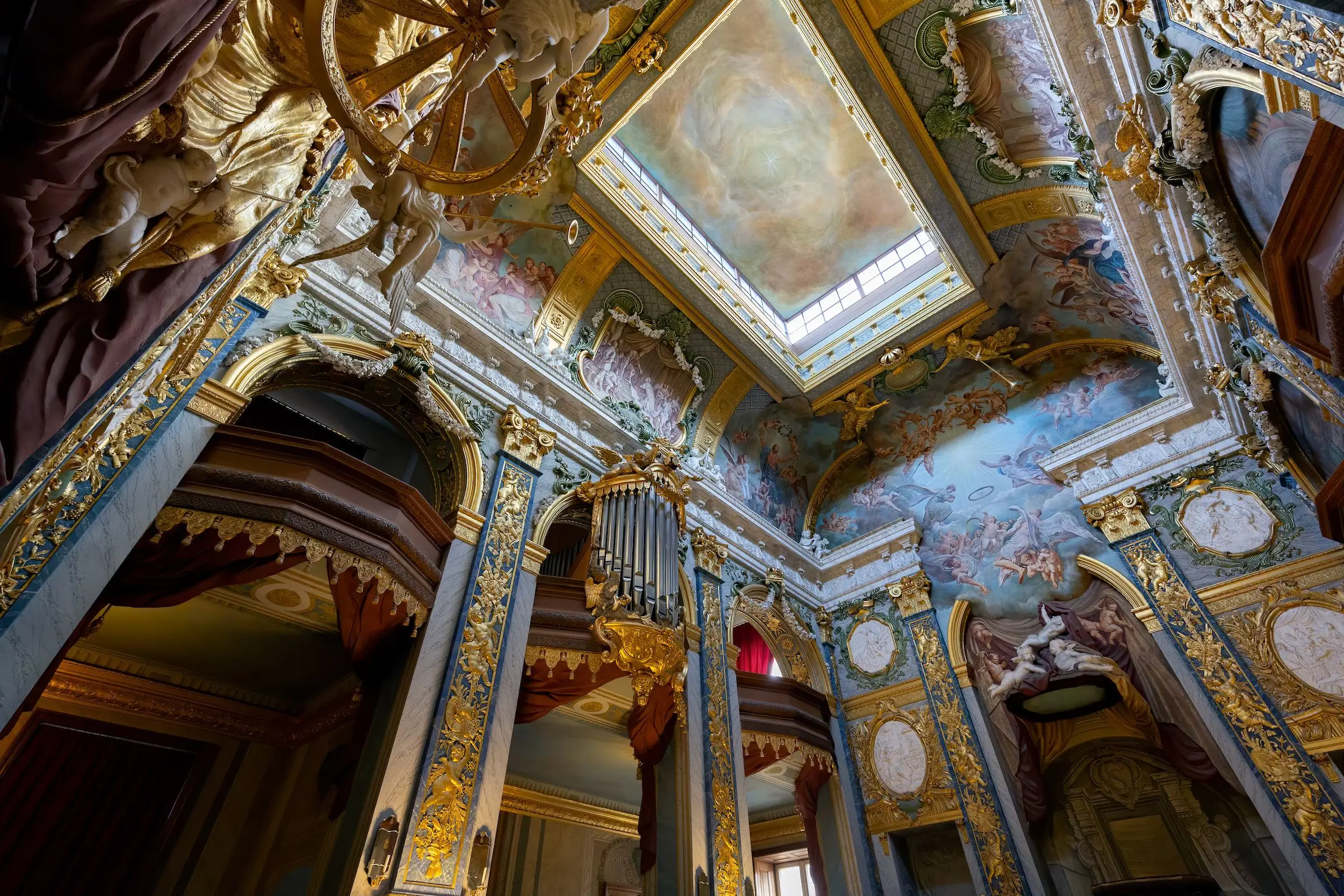
Charlottenburg Palace
 Highlight of Charlottenburg Palace
Highlight of Charlottenburg PalaceDiscover that German design isn't always sleek and efficient in this beautiful baroque palace built with its beautiful collections of art and furnishings.
Originally a modest summer retreat, it grew into an exquisite baroque edifice with opulent private apartments, richly festooned festival halls, collections of precious porcelain and paintings by French 18th-century masters. Especially fascinating is the Porzellankabinett, a room with walls lined from top to bottom by fine Japanese and Chinese porcelain.

Museum Berggruen
 Highlight of Charlottenburg Palace
Highlight of Charlottenburg PalaceCheck out some Picasso paintings in this museum located on the tree-lined boulevard just opposite the palace entrance.
The musem holds a collection of rarely seen Picasso paintings, as well as other notable artwork, including some Cezannes, van Goghs and Klees. There are several other worthwhile museums, as well as cafes and beautiful villas all located nearby on the street known as Schloßtraße.

Charlottenburg Palace Park
 Highlight of Charlottenburg Palace
Highlight of Charlottenburg PalaceGet pleasantly lost in the royal park surrounding the palace.
The elegant formal Baroque garden directly adjacent to the palace has been restored to its original layout from the 1700's, complete with ornate fountains featuring replica antique sculptures. Beyond the gardens, you will find a delightfully relaxing forested park, which is criss-crossed by gravel paths and interspersed with canals and other waterways. It is a delight to explore either on foot or bicycle.

Charlottenburg Palace
 Highlight of Charlottenburg Palace
Highlight of Charlottenburg PalaceDiscover that German design isn't always sleek and efficient in this beautiful baroque palace built with its beautiful collections of art and furnishings.
Originally a modest summer retreat, it grew into an exquisite baroque edifice with opulent private apartments, richly festooned festival halls, collections of precious porcelain and paintings by French 18th-century masters. Especially fascinating is the Porzellankabinett, a room with walls lined from top to bottom by fine Japanese and Chinese porcelain.

Museum Berggruen
 Highlight of Charlottenburg Palace
Highlight of Charlottenburg PalaceCheck out some Picasso paintings in this museum located on the tree-lined boulevard just opposite the palace entrance.
The musem holds a collection of rarely seen Picasso paintings, as well as other notable artwork, including some Cezannes, van Goghs and Klees. There are several other worthwhile museums, as well as cafes and beautiful villas all located nearby on the street known as Schloßtraße.
prev
next

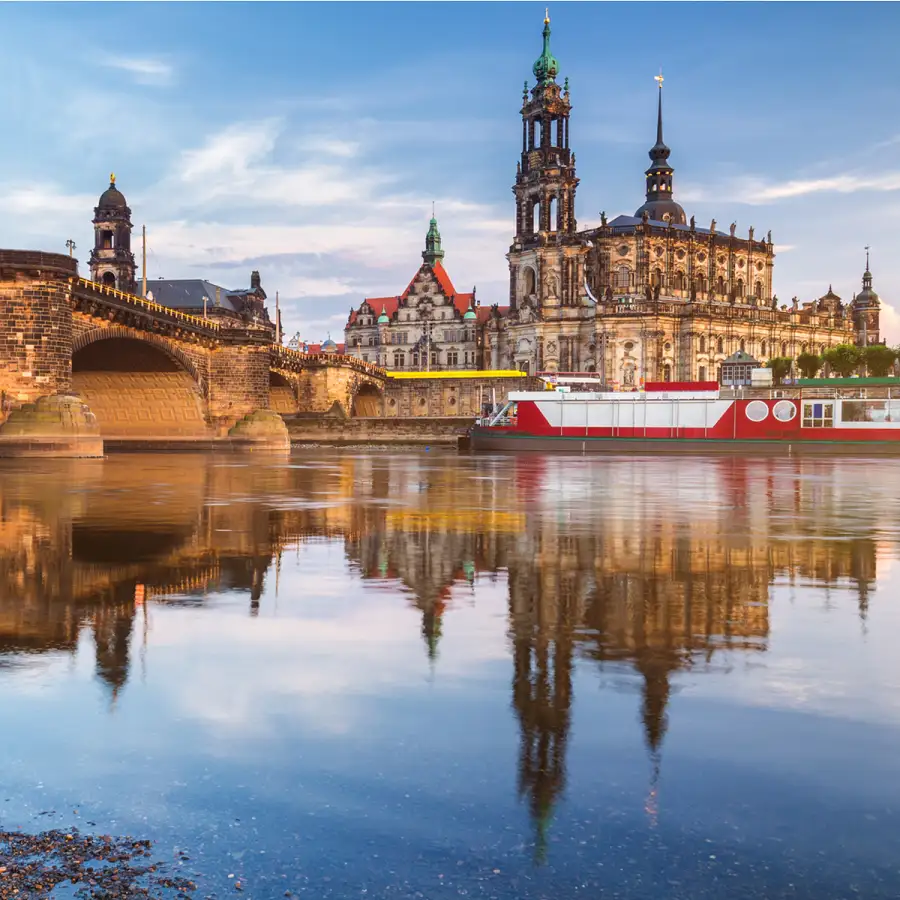
Day 11
Dresden
Day 11
Dresden




9:00 AM - 11:30 AM
Old Town Walking Tour
During this 2 hour tour you will discover the most impressive sights of Dresden Old Town, like the world famous Zwinger Palace, the Semper Opera House, the Cathedral or the Royal Palace. Our guide will give you all the historic background. You will also have a chance to see the reconstructed Frauenkirche, a symbol of reconciliation and peace in the world, a real pride of inhabitants of Dresden.

Zwinger Palace
See why the palace and its gardens were considered beautiful enough to hold some of Germany's most precious artworks.
Show More

Zwinger Palace
See why the palace and its gardens were considered beautiful enough to hold some of Germany's most precious artworks.
Show More

Zwinger Palace
See why the palace and its gardens were considered beautiful enough to hold some of Germany's most precious artworks.
Show More

Zwinger Palace
See why the palace and its gardens were considered beautiful enough to hold some of Germany's most precious artworks.
Show More

Zwinger Palace
See why the palace and its gardens were considered beautiful enough to hold some of Germany's most precious artworks.
Show More
prev
next

Day 11
Dresden

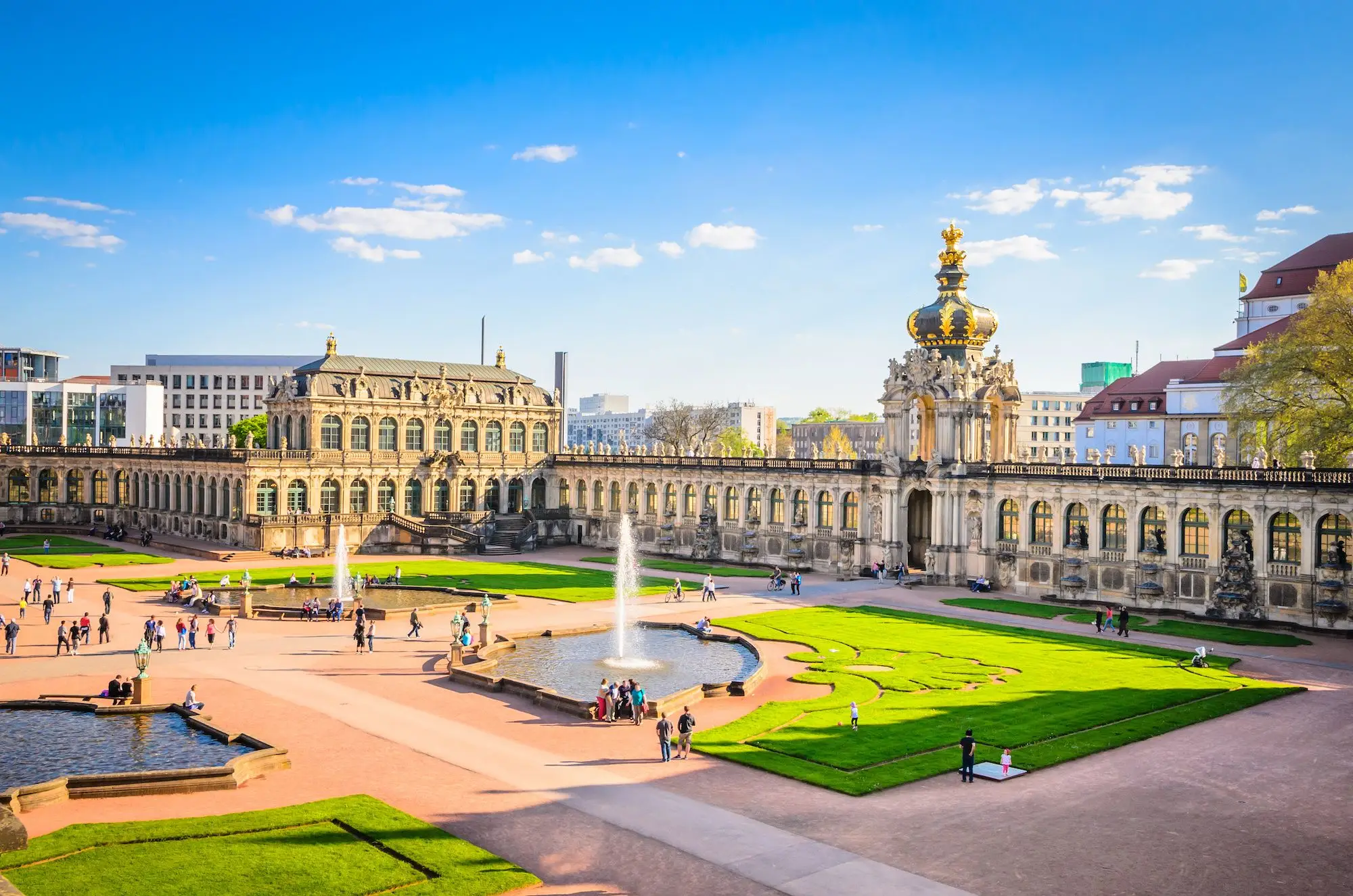
Zwinger Palace
 Highlight of Old Town Walking Tour
Highlight of Old Town Walking TourSee why the palace and its gardens were considered beautiful enough to hold some of Germany's most precious artworks.
There is much to see in the Zwinger besides the Old Masters' Gallery. The palace is one of the most admired Baroque structures in all of Germany, if not in Europe, so the architecture and gardens are attractions in themselves. There is also a porcelain collection and Royal Cabinet of Mathematical and Physical Instruments. The palace was originally built in 1709 as an orangery and garden. However, its beautifully adorned galleries and pavilions were intended to eventually serve as a forecourt for a much larger palace, which would be a testament to the power and greatness of Saxony's then ruler, Augustus the Strong. After his death that plan was dropped, and it would not be until the 19th century that the palace would find a suitable role to live up to its grandness, when it was transformed into a museum complex.

Zwinger Palace
 Highlight of Old Town Walking Tour
Highlight of Old Town Walking TourSee why the palace and its gardens were considered beautiful enough to hold some of Germany's most precious artworks.
There is much to see in the Zwinger besides the Old Masters' Gallery. The palace is one of the most admired Baroque structures in all of Germany, if not in Europe, so the architecture and gardens are attractions in themselves. There is also a porcelain collection and Royal Cabinet of Mathematical and Physical Instruments. The palace was originally built in 1709 as an orangery and garden. However, its beautifully adorned galleries and pavilions were intended to eventually serve as a forecourt for a much larger palace, which would be a testament to the power and greatness of Saxony's then ruler, Augustus the Strong. After his death that plan was dropped, and it would not be until the 19th century that the palace would find a suitable role to live up to its grandness, when it was transformed into a museum complex.

Zwinger Palace
 Highlight of Old Town Walking Tour
Highlight of Old Town Walking TourSee why the palace and its gardens were considered beautiful enough to hold some of Germany's most precious artworks.
There is much to see in the Zwinger besides the Old Masters' Gallery. The palace is one of the most admired Baroque structures in all of Germany, if not in Europe, so the architecture and gardens are attractions in themselves. There is also a porcelain collection and Royal Cabinet of Mathematical and Physical Instruments. The palace was originally built in 1709 as an orangery and garden. However, its beautifully adorned galleries and pavilions were intended to eventually serve as a forecourt for a much larger palace, which would be a testament to the power and greatness of Saxony's then ruler, Augustus the Strong. After his death that plan was dropped, and it would not be until the 19th century that the palace would find a suitable role to live up to its grandness, when it was transformed into a museum complex.

Zwinger Palace
 Highlight of Old Town Walking Tour
Highlight of Old Town Walking TourSee why the palace and its gardens were considered beautiful enough to hold some of Germany's most precious artworks.
There is much to see in the Zwinger besides the Old Masters' Gallery. The palace is one of the most admired Baroque structures in all of Germany, if not in Europe, so the architecture and gardens are attractions in themselves. There is also a porcelain collection and Royal Cabinet of Mathematical and Physical Instruments. The palace was originally built in 1709 as an orangery and garden. However, its beautifully adorned galleries and pavilions were intended to eventually serve as a forecourt for a much larger palace, which would be a testament to the power and greatness of Saxony's then ruler, Augustus the Strong. After his death that plan was dropped, and it would not be until the 19th century that the palace would find a suitable role to live up to its grandness, when it was transformed into a museum complex.

Zwinger Palace
 Highlight of Old Town Walking Tour
Highlight of Old Town Walking TourSee why the palace and its gardens were considered beautiful enough to hold some of Germany's most precious artworks.
There is much to see in the Zwinger besides the Old Masters' Gallery. The palace is one of the most admired Baroque structures in all of Germany, if not in Europe, so the architecture and gardens are attractions in themselves. There is also a porcelain collection and Royal Cabinet of Mathematical and Physical Instruments. The palace was originally built in 1709 as an orangery and garden. However, its beautifully adorned galleries and pavilions were intended to eventually serve as a forecourt for a much larger palace, which would be a testament to the power and greatness of Saxony's then ruler, Augustus the Strong. After his death that plan was dropped, and it would not be until the 19th century that the palace would find a suitable role to live up to its grandness, when it was transformed into a museum complex.
prev
next


Day 12
Dresden
Day 12
Dresden




Morning
Zwinger Gallery
Once you see the superb collection of old masters in the magnificent Zwinger Palace, you'll understand why Dresden is known as the "Florence of the North". A visit to the "Gemäldegalerie Alte Meister" is an absolute must for any art lover. The collection is renowned for its Italian Renaissance art, with major works by Giorgione, Titian, Correggio, Mantegna, Botticelli, Parmigianino, Veronese, Tintoretto, and Raphael, including his priceless “Sistine Madonna”. It is also famous for its collection of 17th-century Dutch and Flemish masters, which includes paintings by Rembrandt and his school, as well as Ruysdael and the great Flemish artists Rubens, Jordaens and Van Dyck.

Zwinger Palace
See why the palace and its gardens were considered beautiful enough to hold some of Germany's most precious artworks.
Show More

Zwinger Palace
See why the palace and its gardens were considered beautiful enough to hold some of Germany's most precious artworks.
Show More

Zwinger Palace
See why the palace and its gardens were considered beautiful enough to hold some of Germany's most precious artworks.
Show More

Zwinger Palace
See why the palace and its gardens were considered beautiful enough to hold some of Germany's most precious artworks.
Show More

Zwinger Palace
See why the palace and its gardens were considered beautiful enough to hold some of Germany's most precious artworks.
Show More
prev
next

Day 12
Dresden


Zwinger Palace
 Highlight of Zwinger Gallery
Highlight of Zwinger GallerySee why the palace and its gardens were considered beautiful enough to hold some of Germany's most precious artworks.
There is much to see in the Zwinger besides the Old Masters' Gallery. The palace is one of the most admired Baroque structures in all of Germany, if not in Europe, so the architecture and gardens are attractions in themselves. There is also a porcelain collection and Royal Cabinet of Mathematical and Physical Instruments. The palace was originally built in 1709 as an orangery and garden. However, its beautifully adorned galleries and pavilions were intended to eventually serve as a forecourt for a much larger palace, which would be a testament to the power and greatness of Saxony's then ruler, Augustus the Strong. After his death that plan was dropped, and it would not be until the 19th century that the palace would find a suitable role to live up to its grandness, when it was transformed into a museum complex.

Zwinger Palace
 Highlight of Zwinger Gallery
Highlight of Zwinger GallerySee why the palace and its gardens were considered beautiful enough to hold some of Germany's most precious artworks.
There is much to see in the Zwinger besides the Old Masters' Gallery. The palace is one of the most admired Baroque structures in all of Germany, if not in Europe, so the architecture and gardens are attractions in themselves. There is also a porcelain collection and Royal Cabinet of Mathematical and Physical Instruments. The palace was originally built in 1709 as an orangery and garden. However, its beautifully adorned galleries and pavilions were intended to eventually serve as a forecourt for a much larger palace, which would be a testament to the power and greatness of Saxony's then ruler, Augustus the Strong. After his death that plan was dropped, and it would not be until the 19th century that the palace would find a suitable role to live up to its grandness, when it was transformed into a museum complex.

Zwinger Palace
 Highlight of Zwinger Gallery
Highlight of Zwinger GallerySee why the palace and its gardens were considered beautiful enough to hold some of Germany's most precious artworks.
There is much to see in the Zwinger besides the Old Masters' Gallery. The palace is one of the most admired Baroque structures in all of Germany, if not in Europe, so the architecture and gardens are attractions in themselves. There is also a porcelain collection and Royal Cabinet of Mathematical and Physical Instruments. The palace was originally built in 1709 as an orangery and garden. However, its beautifully adorned galleries and pavilions were intended to eventually serve as a forecourt for a much larger palace, which would be a testament to the power and greatness of Saxony's then ruler, Augustus the Strong. After his death that plan was dropped, and it would not be until the 19th century that the palace would find a suitable role to live up to its grandness, when it was transformed into a museum complex.

Zwinger Palace
 Highlight of Zwinger Gallery
Highlight of Zwinger GallerySee why the palace and its gardens were considered beautiful enough to hold some of Germany's most precious artworks.
There is much to see in the Zwinger besides the Old Masters' Gallery. The palace is one of the most admired Baroque structures in all of Germany, if not in Europe, so the architecture and gardens are attractions in themselves. There is also a porcelain collection and Royal Cabinet of Mathematical and Physical Instruments. The palace was originally built in 1709 as an orangery and garden. However, its beautifully adorned galleries and pavilions were intended to eventually serve as a forecourt for a much larger palace, which would be a testament to the power and greatness of Saxony's then ruler, Augustus the Strong. After his death that plan was dropped, and it would not be until the 19th century that the palace would find a suitable role to live up to its grandness, when it was transformed into a museum complex.

Zwinger Palace
 Highlight of Zwinger Gallery
Highlight of Zwinger GallerySee why the palace and its gardens were considered beautiful enough to hold some of Germany's most precious artworks.
There is much to see in the Zwinger besides the Old Masters' Gallery. The palace is one of the most admired Baroque structures in all of Germany, if not in Europe, so the architecture and gardens are attractions in themselves. There is also a porcelain collection and Royal Cabinet of Mathematical and Physical Instruments. The palace was originally built in 1709 as an orangery and garden. However, its beautifully adorned galleries and pavilions were intended to eventually serve as a forecourt for a much larger palace, which would be a testament to the power and greatness of Saxony's then ruler, Augustus the Strong. After his death that plan was dropped, and it would not be until the 19th century that the palace would find a suitable role to live up to its grandness, when it was transformed into a museum complex.
prev
next

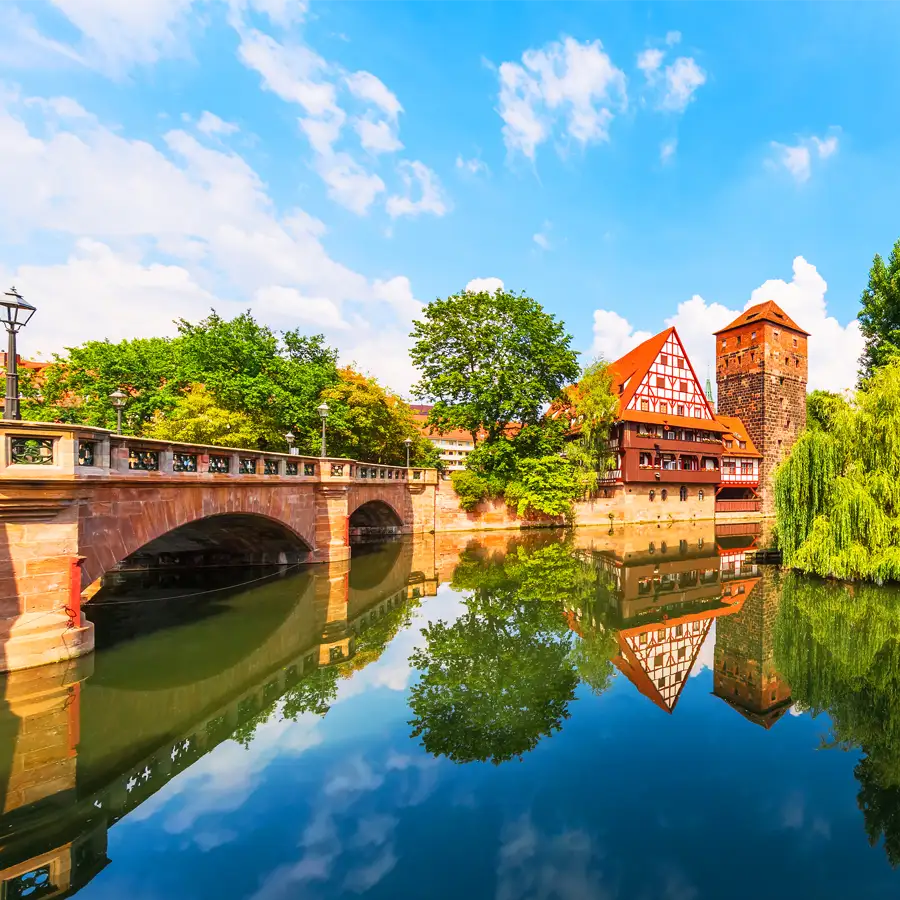
Day 13
Dresden to Nuremberg
Day 13
Dresden to Nuremberg





9:20 AM
Dresden Rail Dropoff
A private transfer service will pick you up from the N/A and deliver you to Dresden Main Train Station. Your itinerary will provide detailed information on navigating the train station and finding your train, making the whole process simple and stress-free. IMPORTANT NOTE: Please be aware the car service can fit up to 1 checked item of luggage and 1 personal item per person, such as a purse or small backpack. If you think you will have more baggage, please inform your travel consultant as this may result in an additional fee.

Day 13
Dresden to Nuremberg



Day 14
Nuremberg
Day 14
Nuremberg


Morning/Mid-Day
Nazi Rally Grounds
Perhaps more than any other German city, Nuremberg was unequivocally linked to the National Socialist German Workers’ Party or Nazi Party. Once Hitler declared Nuremberg “City of Nazi Party Rallies” in 1933, construction began on grand buildings for the party’s mass meetings. Today's visit to the grounds is both enthralling and haunting, as what was once the heart of the Nazi Party Rallies now lies in ruins as a reminder of the megalomania of the Nazi party regime.

Zeppelinfeld
Stand in the very spot from which Hitler once mesmerized crowds with his dark vision.
Show More

Hall of Honor
Search for the traces of a vast amphitheater that once surrounded a WWI Memorial Hall, which was perverted by the Nazis for use in their propaganda machine.
Show More

Doku-Zentrum Museum
Learn how Nuremberg and its rally grounds fit into the Nazis' perverse vision of the global domination and Aryan purity.
Show More

Zeppelinfeld
Stand in the very spot from which Hitler once mesmerized crowds with his dark vision.
Show More

Hall of Honor
Search for the traces of a vast amphitheater that once surrounded a WWI Memorial Hall, which was perverted by the Nazis for use in their propaganda machine.
Show More

Doku-Zentrum Museum
Learn how Nuremberg and its rally grounds fit into the Nazis' perverse vision of the global domination and Aryan purity.
Show More

Zeppelinfeld
Stand in the very spot from which Hitler once mesmerized crowds with his dark vision.
Show More
prev
next

Day 14
Nuremberg


Zeppelinfeld
 Highlight of Nazi Rally Grounds
Highlight of Nazi Rally GroundsStand in the very spot from which Hitler once mesmerized crowds with his dark vision.
The Zeppelin Field with its Grandstand designed by Albert Speer was the most important part of the Party rally grounds during the Third Reich. Bigger than 12 football fields, it could hold far more than 100,000 people. Two gigantic outside flights of stairs and pillar colonnades flanked the center part, decorated with a colossal gold-plated swastika bedded on a laurel wreath. Each end originally had towers adorned with fire bowls. It was here that the famous “Cathedral of Light” provided the spectacular effect, with over 150 very strong floodlights beamed right up into the sky. The empire that was supposed to last a millennium lasted only 12 years, and all that can be found today are the crumbling remains of the large staircase and the center section.
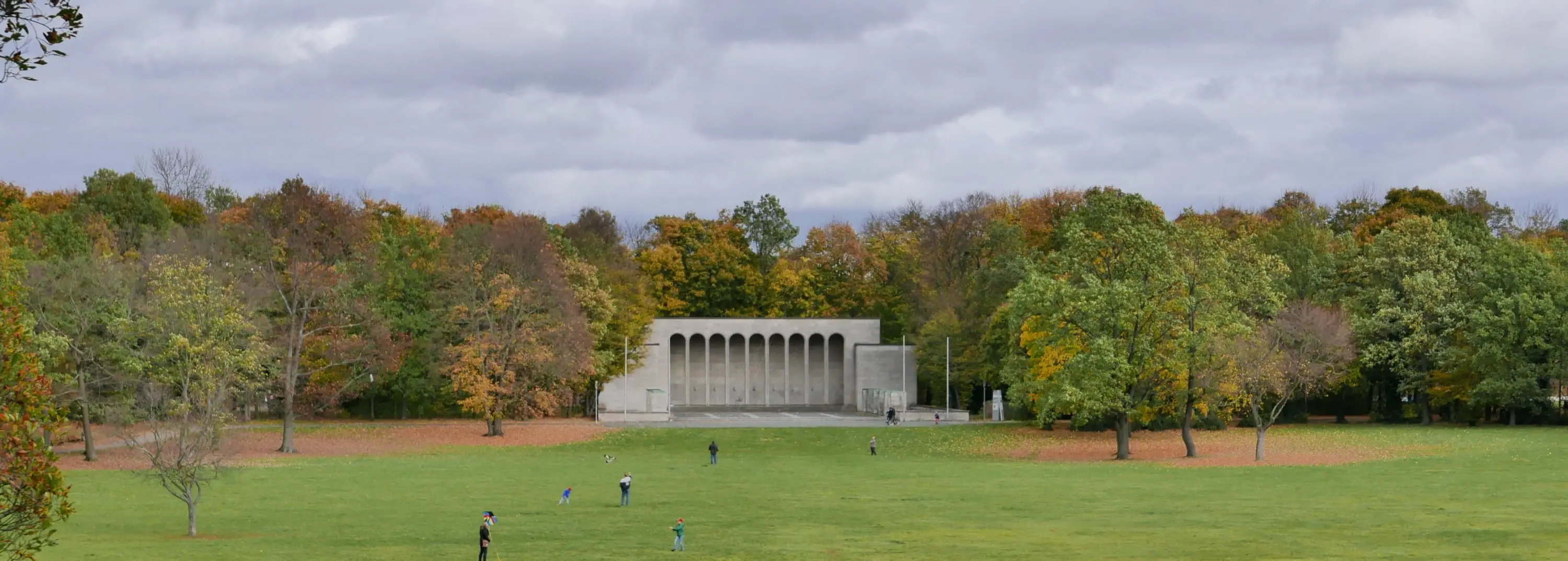
Hall of Honor
 Highlight of Nazi Rally Grounds
Highlight of Nazi Rally GroundsSearch for the traces of a vast amphitheater that once surrounded a WWI Memorial Hall, which was perverted by the Nazis for use in their propaganda machine.
Built 1929-30, the Hall of Honor memorializes the dead from the First World War. However, the Nazis used it for their own means, and it become a part of their rituals and cult of death. This was the original location of the Party Rallies, and in 1933 the park in front of the Hall of Honor was transformed into the Luitpold Arena in order to improve the theatrical effect. A pathway of granite slabs was laid down the middle, creating a direct line to the newly built speaker’s pulpit from where Hitler would later stand to address the masses. Now you will find nothing but some stairways and mounds in the parkside to give you an idea of where the arena once stood.
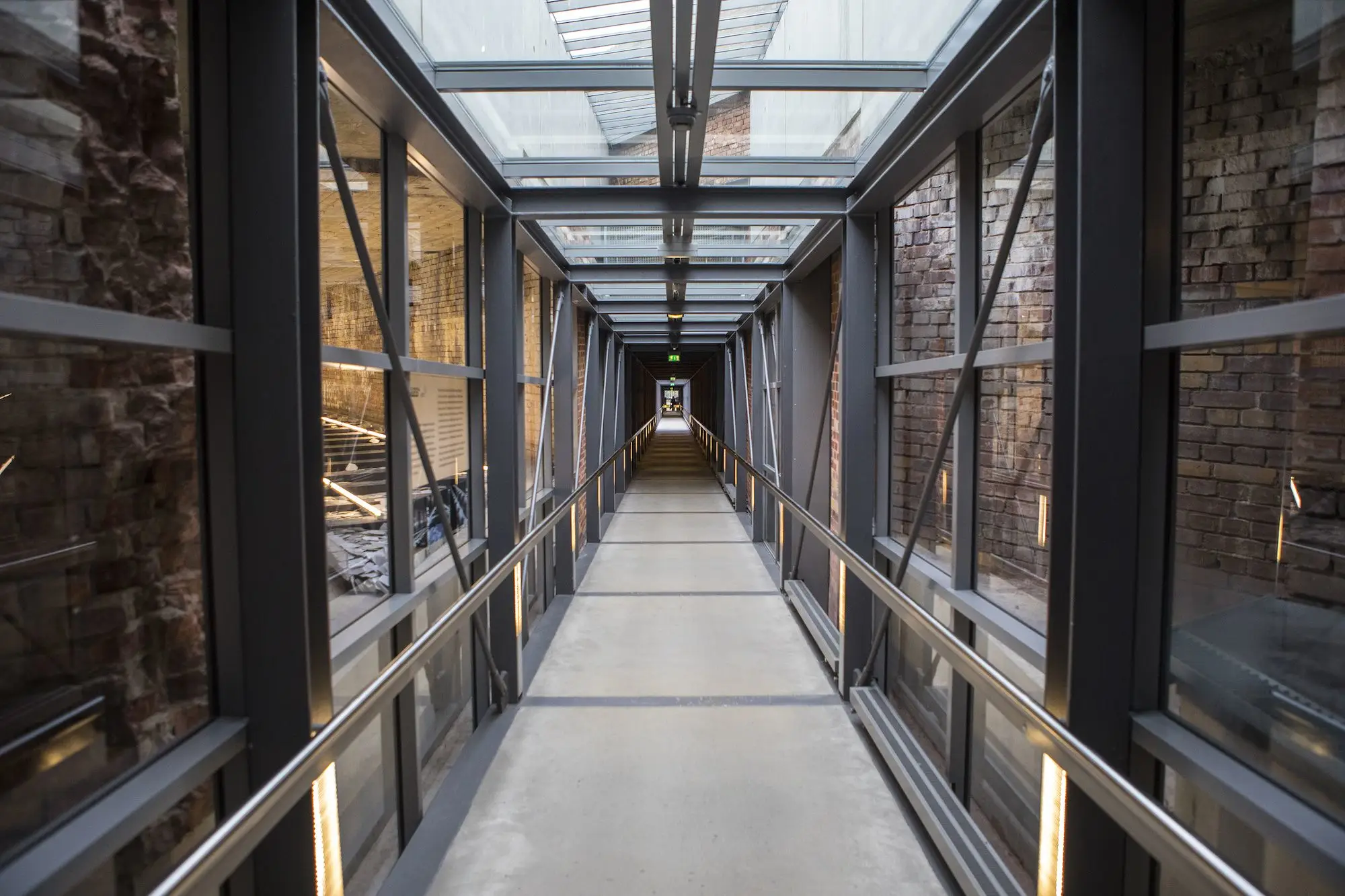
Doku-Zentrum Museum
 Highlight of Nazi Rally Grounds
Highlight of Nazi Rally GroundsLearn how Nuremberg and its rally grounds fit into the Nazis' perverse vision of the global domination and Aryan purity.
The unfinished Congress Hall is one of the largest examples of National Socialist architecture. It was designed to evoke the grandness of the Colosseum in Rome and was meant to hold over 50,000 people. The exterior was finished in late 1938 and construction work continued during the war with the help of Soviet prisoners, but Hitler’s vision was never finished. Today it is home to the Documentation Center, a multi-media museum that provides visitors with detailed information on the ‘fascination and terror’ of the Third Reich. The permanent exhibition has a strong focus on Nuremberg’s history during the Third Reich as well as information that spans from the early days of the National Socialism in 1918 to the end of the war and the Nuremberg Trials in 1945. Aside from the museum, visitors can also gain a great perspective of the grandness of Hitler’s vision for the Congress Hall from the protruding walkway that has been since been built as part of the museum.

Zeppelinfeld
 Highlight of Nazi Rally Grounds
Highlight of Nazi Rally GroundsStand in the very spot from which Hitler once mesmerized crowds with his dark vision.
The Zeppelin Field with its Grandstand designed by Albert Speer was the most important part of the Party rally grounds during the Third Reich. Bigger than 12 football fields, it could hold far more than 100,000 people. Two gigantic outside flights of stairs and pillar colonnades flanked the center part, decorated with a colossal gold-plated swastika bedded on a laurel wreath. Each end originally had towers adorned with fire bowls. It was here that the famous “Cathedral of Light” provided the spectacular effect, with over 150 very strong floodlights beamed right up into the sky. The empire that was supposed to last a millennium lasted only 12 years, and all that can be found today are the crumbling remains of the large staircase and the center section.

Hall of Honor
 Highlight of Nazi Rally Grounds
Highlight of Nazi Rally GroundsSearch for the traces of a vast amphitheater that once surrounded a WWI Memorial Hall, which was perverted by the Nazis for use in their propaganda machine.
Built 1929-30, the Hall of Honor memorializes the dead from the First World War. However, the Nazis used it for their own means, and it become a part of their rituals and cult of death. This was the original location of the Party Rallies, and in 1933 the park in front of the Hall of Honor was transformed into the Luitpold Arena in order to improve the theatrical effect. A pathway of granite slabs was laid down the middle, creating a direct line to the newly built speaker’s pulpit from where Hitler would later stand to address the masses. Now you will find nothing but some stairways and mounds in the parkside to give you an idea of where the arena once stood.

Doku-Zentrum Museum
 Highlight of Nazi Rally Grounds
Highlight of Nazi Rally GroundsLearn how Nuremberg and its rally grounds fit into the Nazis' perverse vision of the global domination and Aryan purity.
The unfinished Congress Hall is one of the largest examples of National Socialist architecture. It was designed to evoke the grandness of the Colosseum in Rome and was meant to hold over 50,000 people. The exterior was finished in late 1938 and construction work continued during the war with the help of Soviet prisoners, but Hitler’s vision was never finished. Today it is home to the Documentation Center, a multi-media museum that provides visitors with detailed information on the ‘fascination and terror’ of the Third Reich. The permanent exhibition has a strong focus on Nuremberg’s history during the Third Reich as well as information that spans from the early days of the National Socialism in 1918 to the end of the war and the Nuremberg Trials in 1945. Aside from the museum, visitors can also gain a great perspective of the grandness of Hitler’s vision for the Congress Hall from the protruding walkway that has been since been built as part of the museum.

Zeppelinfeld
 Highlight of Nazi Rally Grounds
Highlight of Nazi Rally GroundsStand in the very spot from which Hitler once mesmerized crowds with his dark vision.
The Zeppelin Field with its Grandstand designed by Albert Speer was the most important part of the Party rally grounds during the Third Reich. Bigger than 12 football fields, it could hold far more than 100,000 people. Two gigantic outside flights of stairs and pillar colonnades flanked the center part, decorated with a colossal gold-plated swastika bedded on a laurel wreath. Each end originally had towers adorned with fire bowls. It was here that the famous “Cathedral of Light” provided the spectacular effect, with over 150 very strong floodlights beamed right up into the sky. The empire that was supposed to last a millennium lasted only 12 years, and all that can be found today are the crumbling remains of the large staircase and the center section.
prev
next


Day 15
Nuremberg to Munich
Day 15
Nuremberg to Munich






9:20 AM
Transfer to Rail Station
Most trains depart from Nürnberg Hbf station, the largest station in the city. Before spending money on a transfer, be sure to check whether your hotel is within easy walking distance. Also consider that public transport is the cheapest and sometimes fastest option, and you can easily reach the station from almost anywhere in the city, as it is the public transport hub. Uber is not yet available in Nuremberg, but if staying at a hotel, they can order a reliable taxi. Some private transfers will even help with your bags.

Day 15
Nuremberg to Munich



Day 16
Munich
Day 16
Munich




9:00 AM - 11:30 AM
Guided Walk Tour of Historic Munich
Munich contains many reminders of a long and varied history but also encompasses the modern features of a strong and vibrant city. The insights of a local help make sense of the traditions, trends, and promises of Bavaria's Capital - sometimes referred to as the city of laptops and lederhosen. On this tour, your guide will show you the highlights of Munich and point out the many hidden treasures.

Day 16
Munich



Day 17
Munich
Day 17
Munich


Morning to Late Afternoon
Excursion to Neuschwanstein Castle
An inspiration for the Disney Castles, numerous fairy tales, and countless dreamers, the Castle of Neuschwanstein is perhaps the most famous castle in the world. The eccentric Bavarian King Ludwig II created this amazing palace in the 19th century as an idyllic version of a medieval castle. You can visit by taking a guided tour from Munich or traveling independently by train and bus. In addition to enjoying spectacular views you can take a guided tour of the castle interior which is well worth the experience (but keep in mind that there a lots of steps to negotiate). If traveling independentally, be sure to book your interior tour reservations at least two days in advance.

Linderhof Palace
Stop by King Ludwig II's smallest palace on your way to Neuschwanstein and explore its delightful gardens.
Show More

Mary's Bridge
Enjoy a stunning view of the castle while suspended over a mountainous gorge.
Show More

Linderhof Palace
Stop by King Ludwig II's smallest palace on your way to Neuschwanstein and explore its delightful gardens.
Show More

Mary's Bridge
Enjoy a stunning view of the castle while suspended over a mountainous gorge.
Show More

Linderhof Palace
Stop by King Ludwig II's smallest palace on your way to Neuschwanstein and explore its delightful gardens.
Show More

Mary's Bridge
Enjoy a stunning view of the castle while suspended over a mountainous gorge.
Show More
prev
next

Day 17
Munich


Linderhof Palace
 Highlight of Excursion to Neuschwanstein Castle
Highlight of Excursion to Neuschwanstein CastleStop by King Ludwig II's smallest palace on your way to Neuschwanstein and explore its delightful gardens.
Another of the eccentric (some say mad) King Ludwig II's creations is Linderhof Palace, which with its fantastic grotto and Moorish pavilion testifies to the king's vision. The smallest of his three palaces that he built, it is the only one that he lived to see completed. The palace is in between Munich and Neuschwanstein, meaning many tours stop there along the way.
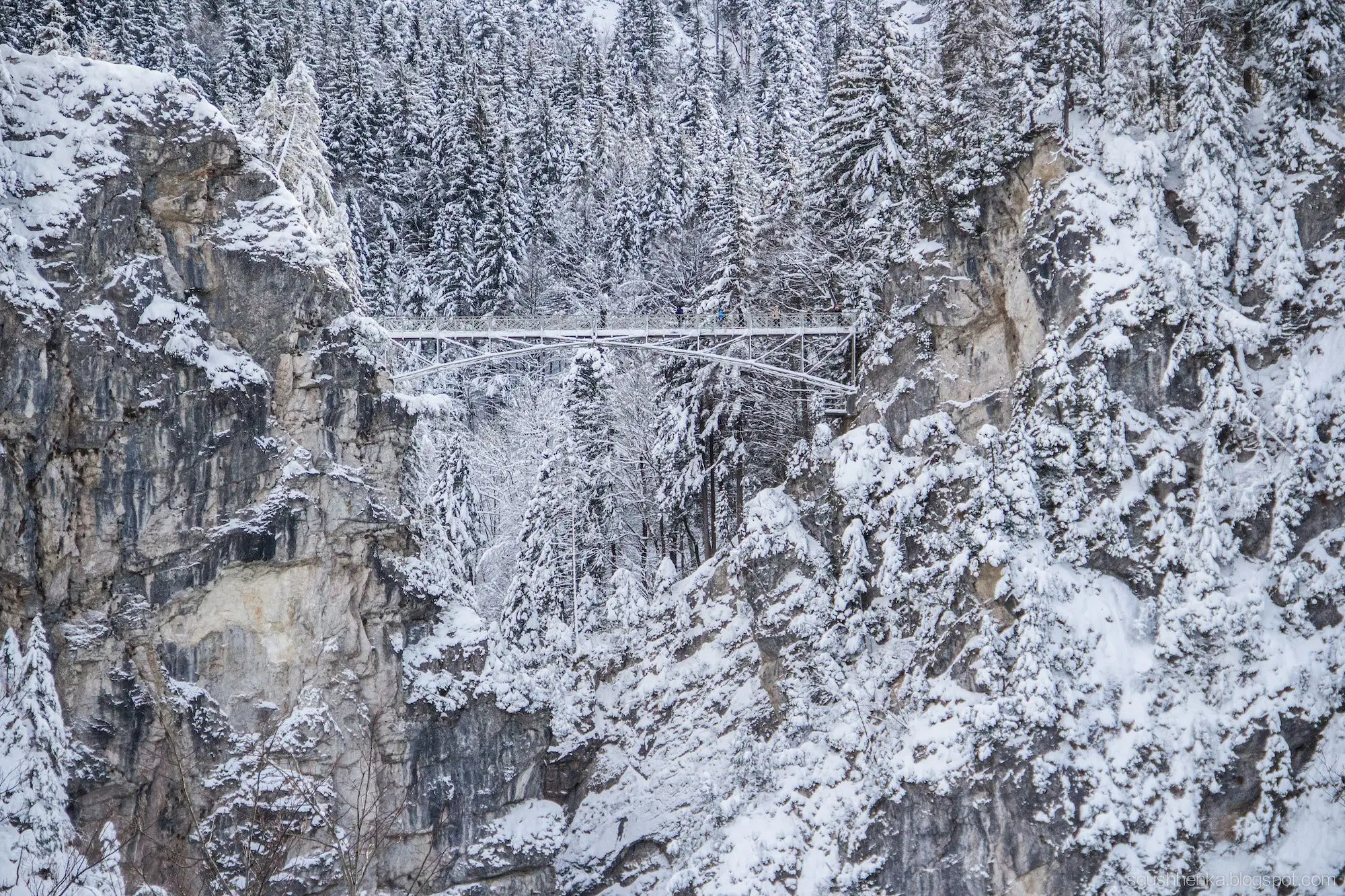
Mary's Bridge
 Highlight of Excursion to Neuschwanstein Castle
Highlight of Excursion to Neuschwanstein CastleEnjoy a stunning view of the castle while suspended over a mountainous gorge.
You definitely won't want to miss taking in the best views and photographs of Neuschwanstein from Marienbrücke (Mary's Bridge) over the dramatic Pöllat Gorge. The minibus terminal is very close at just 5 min walk away, while it's a steepish 10-15min climb on a wide and well-groomed path to get there from behind the castle. As noted above, Mary's Bridge can get a little crowded, so you might have to wait for a gap before you can fit on.

Linderhof Palace
 Highlight of Excursion to Neuschwanstein Castle
Highlight of Excursion to Neuschwanstein CastleStop by King Ludwig II's smallest palace on your way to Neuschwanstein and explore its delightful gardens.
Another of the eccentric (some say mad) King Ludwig II's creations is Linderhof Palace, which with its fantastic grotto and Moorish pavilion testifies to the king's vision. The smallest of his three palaces that he built, it is the only one that he lived to see completed. The palace is in between Munich and Neuschwanstein, meaning many tours stop there along the way.

Mary's Bridge
 Highlight of Excursion to Neuschwanstein Castle
Highlight of Excursion to Neuschwanstein CastleEnjoy a stunning view of the castle while suspended over a mountainous gorge.
You definitely won't want to miss taking in the best views and photographs of Neuschwanstein from Marienbrücke (Mary's Bridge) over the dramatic Pöllat Gorge. The minibus terminal is very close at just 5 min walk away, while it's a steepish 10-15min climb on a wide and well-groomed path to get there from behind the castle. As noted above, Mary's Bridge can get a little crowded, so you might have to wait for a gap before you can fit on.

Linderhof Palace
 Highlight of Excursion to Neuschwanstein Castle
Highlight of Excursion to Neuschwanstein CastleStop by King Ludwig II's smallest palace on your way to Neuschwanstein and explore its delightful gardens.
Another of the eccentric (some say mad) King Ludwig II's creations is Linderhof Palace, which with its fantastic grotto and Moorish pavilion testifies to the king's vision. The smallest of his three palaces that he built, it is the only one that he lived to see completed. The palace is in between Munich and Neuschwanstein, meaning many tours stop there along the way.

Mary's Bridge
 Highlight of Excursion to Neuschwanstein Castle
Highlight of Excursion to Neuschwanstein CastleEnjoy a stunning view of the castle while suspended over a mountainous gorge.
You definitely won't want to miss taking in the best views and photographs of Neuschwanstein from Marienbrücke (Mary's Bridge) over the dramatic Pöllat Gorge. The minibus terminal is very close at just 5 min walk away, while it's a steepish 10-15min climb on a wide and well-groomed path to get there from behind the castle. As noted above, Mary's Bridge can get a little crowded, so you might have to wait for a gap before you can fit on.
prev
next


Day 18
Munich to Heidelberg
Day 18
Munich to Heidelberg




8:45 AM
Transfer to Rail Station
Most trains depart from Müchen Hbf station, the largest station in the city. Before spending money on a transfer, be sure to check whether your hotel is within easy walking distance. Also consider that public transport is the cheapest and sometimes fastest option. If staying at a hotel, they can order a reliable taxi. Some private transfers will even help with your bags. Uber is also available for those with the app.

Day 18
Munich to Heidelberg


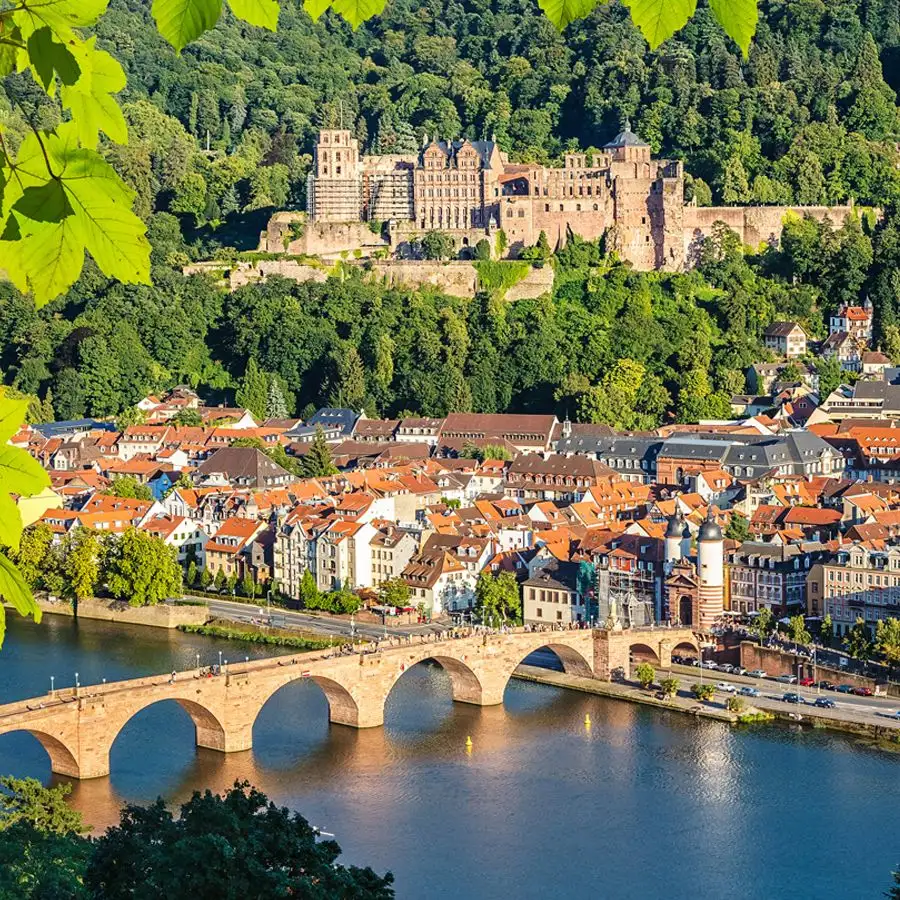
Day 19
Heidelberg
Day 19
Heidelberg



9:00 AM - 1:00 PM
Guided Walking Tour of Heidelberg
On this 4 hour tour, your guide will show you the highlights of Heidelberg and help you understand what makes this city so unique. Sites visited will include the Heidelberg University, the Old Bridge, Altstadt, Town Hall and Heidelberg Castle.

Altstadt
The light and colors of this historic city are a happy sight to behold.
Show More

Heidelberg University
Founded in 1386, this is Germany’s oldest and one of its most prestigious universities.
Show More

Altstadt
The light and colors of this historic city are a happy sight to behold.
Show More

Heidelberg University
Founded in 1386, this is Germany’s oldest and one of its most prestigious universities.
Show More

Altstadt
The light and colors of this historic city are a happy sight to behold.
Show More

Heidelberg University
Founded in 1386, this is Germany’s oldest and one of its most prestigious universities.
Show More
prev
next

Day 19
Heidelberg


Altstadt
 Highlight of Guided Walking Tour of Heidelberg
Highlight of Guided Walking Tour of HeidelbergThe light and colors of this historic city are a happy sight to behold.
The Old Town of Heidelberg, Germany, seduces with its views. Framed by the Neckar River and overlooked by the majestic Heidelberg Castle, its cobblestone streets, baroque architecture, and the oldest university in Germany beckon visitors. Highlights include the Hauptstrasse, a bustling pedestrian shopping street, and the historic Holy Spirit Church. Heidelberg's Old Town embodies the romantic spirit of Germany.

Heidelberg University
 Highlight of Guided Walking Tour of Heidelberg
Highlight of Guided Walking Tour of HeidelbergFounded in 1386, this is Germany’s oldest and one of its most prestigious universities.
The university is currently comprised of 12 faculties with over 30,000 German and international students enrolled. The college is known for its reputable science, art, law, and medical programs. The most historic facilities are located around the Universitätsplatz and dominated by the Alte Universität (Old University, 1712–28; on the south side) and the Neue Universität (New University, 1931; on the north side).

Altstadt
 Highlight of Guided Walking Tour of Heidelberg
Highlight of Guided Walking Tour of HeidelbergThe light and colors of this historic city are a happy sight to behold.
The Old Town of Heidelberg, Germany, seduces with its views. Framed by the Neckar River and overlooked by the majestic Heidelberg Castle, its cobblestone streets, baroque architecture, and the oldest university in Germany beckon visitors. Highlights include the Hauptstrasse, a bustling pedestrian shopping street, and the historic Holy Spirit Church. Heidelberg's Old Town embodies the romantic spirit of Germany.

Heidelberg University
 Highlight of Guided Walking Tour of Heidelberg
Highlight of Guided Walking Tour of HeidelbergFounded in 1386, this is Germany’s oldest and one of its most prestigious universities.
The university is currently comprised of 12 faculties with over 30,000 German and international students enrolled. The college is known for its reputable science, art, law, and medical programs. The most historic facilities are located around the Universitätsplatz and dominated by the Alte Universität (Old University, 1712–28; on the south side) and the Neue Universität (New University, 1931; on the north side).

Altstadt
 Highlight of Guided Walking Tour of Heidelberg
Highlight of Guided Walking Tour of HeidelbergThe light and colors of this historic city are a happy sight to behold.
The Old Town of Heidelberg, Germany, seduces with its views. Framed by the Neckar River and overlooked by the majestic Heidelberg Castle, its cobblestone streets, baroque architecture, and the oldest university in Germany beckon visitors. Highlights include the Hauptstrasse, a bustling pedestrian shopping street, and the historic Holy Spirit Church. Heidelberg's Old Town embodies the romantic spirit of Germany.

Heidelberg University
 Highlight of Guided Walking Tour of Heidelberg
Highlight of Guided Walking Tour of HeidelbergFounded in 1386, this is Germany’s oldest and one of its most prestigious universities.
The university is currently comprised of 12 faculties with over 30,000 German and international students enrolled. The college is known for its reputable science, art, law, and medical programs. The most historic facilities are located around the Universitätsplatz and dominated by the Alte Universität (Old University, 1712–28; on the south side) and the Neue Universität (New University, 1931; on the north side).
prev
next


Day 20
Heidelberg
Day 20
Heidelberg


8:30 AM - 3:30 PM
Black Forest, Guided, by Vehicle
With over 6,000 square kilometres of rolling hills, magnificent mountains, and pristine old forests, the Black Forest (Schwarzwald in German) is truly a national treasure. Outdoors enthusiasts travelling to Heidelberg are not to miss out on a visit to this incredible region filled with some of Europe’s best hiking and mountain views.

Day 20
Heidelberg


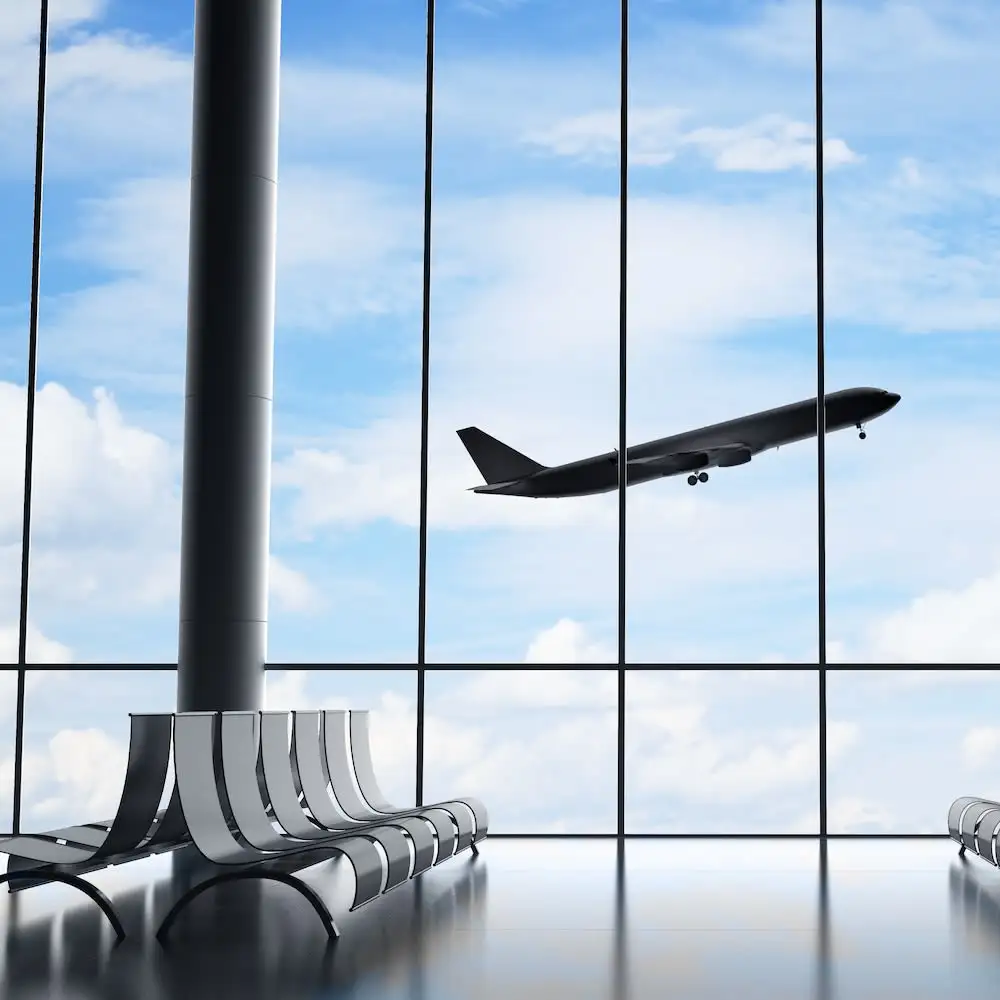
Day 21
Depart Heidelberg
Day 21
Depart Heidelberg

To Be Determined
Rail to Frankfurt Airport
Frankfurt Airport is by far the most convenient airport to Heidelberg, and the most affordable and fast way to reach it is by train or bus. Trains depart frequently from Heidelberg's main station and take only an hour to reach the airport. The airport train station is actually located within the airport, making it especially convenient. In most cases you will take a train which connects in Mannheim. Direct buses also drop off at the airport train station. If you must take a taxi, your hotel can arrange a reliable taxi service, but keep in mind that this will be an expensive and potentially long journey depending on traffic. You can also arrange a private transfer. If you are picked up about 3 hours and 15 minutes before your departure time, you should arrive at the airport with about 2 hours to spare, depending on traffic. If you are leaving during rush hour, you may want to budget an extra thirty minutes. Uber is not available in Heidelberg.

Day 21
Depart Heidelberg


What's Included In 3-Week Germany Trip

Pre-Paid Tours and Activities:
- Guided Excursion to the Rhine River
- Private Highlights Walking Tour of Cologne
- Privately Guided Walking Tour of Hamburg
- Highlights of Berlin Guided Walking Tour
- Guided Walking Tour of Old Town
- Guided Walking Tour of Nuremberg's Old Town & Imperial Castle Courtyards
- Guided Walk Tour of Historic Munich
- Guided Walking Tour of the Heidelberg's Altstadt and Castle
- Guided Excursion to the Black Forest
- City Cards for Munich, Berlin, Cologne, and Hamburg, including discounts to many popular attractions

Pre-Paid Transportation:
- 2nd Class Train Tickets from Cologne-Hamburg
- 2nd Class Train Tickets from Hamburg-Berlin
- 2nd Class Train Tickets from Berlin to Dresden
- 2nd Class Train Tickets from Dresden to Leipzig
- 2nd Class Train Tickets from Leipzig to Nuremberg
- 2nd Class Train Tickets from Nuremberg-Munich
- 2nd Class Train Tickets from Munich to Mannheim
- 2nd Class Train Tickets from Mannheim to Heidelberg
- Train Tickets from Frankfurt-Cologne
- Public Transport Tickets for Munich, Berlin, Cologne, and Hamburg
- Private Transfer from the Dresden Hauptbanhof
- Dresden Rail Dropoff

Accommodation:
- 2 nights at a hotel of your choice in Frankfurt
- 2 nights at a hotel of your choice in Cologne
- 2 nights at a hotel of your choice in Hamburg
- 3 nights at a hotel of your choice in Berlin
- 3 nights at a hotel of your choice in Dresden
- 2 nights at a hotel of your choice in Nuremberg
- 3 nights at a hotel of your choice in Munich
- 3 nights at a hotel of your choice in Heidelberg

Go Real Travel Mobile App:
- Itinerary Plan & Reservations Info
- Points of Interest
- Detailed Travel Information
- Maps & Directions
Other Trips You May Like

10 Days
From$3390USD

10 Days
From$3250USD
Enchanting Christmas Market Trip to Bavaria & Prague with Gabriella-Maria

Germany, Czech Republic

10 Days
From$1995USD
An Active Adventure to Berlin, Dresden, Prague, and the Saxon Switzerland

Germany, Czech Republic

12 Days
From$2449USD
12 Days in the Heart of Central Europe: Berlin, Prague, Vienna, and Munich

Germany, Czech Republic, Austria

21 Days
From$5199USD
Canals, Castles, and Culture: A Three-Week Journey in the Netherlands & Germany

Netherlands, Germany

10 Days
From$1415USD

10 Days
From$1899USD

10 Days
From$2639USD

7 Days
From$1375USD

10 Days
From$3390USD

10 Days
From$3250USD
Enchanting Christmas Market Trip to Bavaria & Prague with Gabriella-Maria

Germany, Czech Republic

10 Days
From$1995USD
An Active Adventure to Berlin, Dresden, Prague, and the Saxon Switzerland

Germany, Czech Republic

12 Days
From$2449USD
12 Days in the Heart of Central Europe: Berlin, Prague, Vienna, and Munich

Germany, Czech Republic, Austria

21 Days
From$5199USD
Canals, Castles, and Culture: A Three-Week Journey in the Netherlands & Germany

Netherlands, Germany

10 Days
From$1415USD

10 Days
From$1899USD

10 Days
From$2639USD

7 Days
From$1375USD
prev
next
Featured Blogs
prev
next
Our Customers Say It Best
Marianne Strydom, Paarl, South Africa
I just wanted to thank you for organizing an amazing trip for me – I packed in so much in such a short period of time and everything was just perfect. The way you do things makes it possible to really get to know the destination, which for me as a travel agent could not have been better. 

Otto Chuy, Los Angeles, California
I am still surprised how everything worked as planned, without a hitch. All instructions in your itinerary were precise and correct. Your suggestions and comments in each of the locations we went to were very helpful. All your guides, without exception, were wonderful and exactly on time. 

Malini Dutta, Boston, Massachusetts
We can't thank you enough for the detailed plans, maps, and suggestions. It really felt that someone was holding our hands and showing us around. We had all the excitement of discovering foreign lands, with none of the problems that can happen while negotiating unfamiliar places. In fact, all the cities felt like home within a few hours of arriving and exploring. 

Bev and Mark Frankel, Williamsburg, Virginia
We could not be more pleased with Go Real Travel! You took the guess work out of things like public transport but still managed to allow us the freedom to tour as we wanted. Our guides were exceptional and every time I saw a Viking Cruise tour of 25 people, I realized the quality experience we were getting with Go Real. 

Marianne Strydom, Paarl, South Africa
I just wanted to thank you for organizing an amazing trip for me – I packed in so much in such a short period of time and everything was just perfect. The way you do things makes it possible to really get to know the destination, which for me as a travel agent could not have been better. 

Otto Chuy, Los Angeles, California
I am still surprised how everything worked as planned, without a hitch. All instructions in your itinerary were precise and correct. Your suggestions and comments in each of the locations we went to were very helpful. All your guides, without exception, were wonderful and exactly on time. 

Malini Dutta, Boston, Massachusetts
We can't thank you enough for the detailed plans, maps, and suggestions. It really felt that someone was holding our hands and showing us around. We had all the excitement of discovering foreign lands, with none of the problems that can happen while negotiating unfamiliar places. In fact, all the cities felt like home within a few hours of arriving and exploring. 

Bev and Mark Frankel, Williamsburg, Virginia
We could not be more pleased with Go Real Travel! You took the guess work out of things like public transport but still managed to allow us the freedom to tour as we wanted. Our guides were exceptional and every time I saw a Viking Cruise tour of 25 people, I realized the quality experience we were getting with Go Real. 



Explore cities in more detail

Dresden
Nearly every wall and rooftop in Dresden seems to be finished with a flourish. Defined by its ornamental baroque architecture, a power statement of Saxon royalty, Dresden is made all the more miraculous considering the city was leveled by firebombing in WWII. After the war, the city was reconstructed, brick by painstaking brick. Even under East German-Soviet rule, which usually eschewed frivolous design, buildings like the Semper Opera House were pieced back to their former glory. Restoration of the majestic Zwinger Palace and bell domed Church of Our Lady slowly followed, with the Frauenkirche only fully repaired in 2005. Arguably there is no other city in Europe that cherishes its hard-won architecture as much as Dresden. Although it is a compact city, so many of its buildings will stop you in your tracks that architecture fans will easily lose a whole day in the Old Town area. Especially during the winter months, Dresden sparkles with a joyous, uplifting ambiance. The city is recognized as having the best-ever Christmas market in all of Europe. Between the twinkling lights, the scent of hot wine and gingerbread, and the towering Christmas tree, it’s worth going out of your way to see Dresden at this time of year.

Learn About Dresden
Build Dresden Trip

Nuremberg
One of the most authentic, storied German destinations, Nuremberg's picturesque old town, glorious castle, and buzzing Christmas Market makes this city a time-true classic. The ideal gateway to old Bavaria, Nuremberg offers a primer in German history before you embark on the lovely journey through old Bavaria, known as the Romantic Road. Considered the capital of the Holy Roman Empire in the middle ages, Nuremberg would have felt like the center of the world as a procession of kings and emperors passed through its magnificent gates. When the German Renaissance came, Nuremberg was at its heart. Albrecht Dürer, the great German master artist, was born here, and Martin Luther called Nuremberg Germany's 'eyes and ears'. Skip forward a few centuries, and the city took a dark turn, as Nuremberg became a gathering point for the German National Socialists. Slightly outside of town, you can still find the Nazi Party Rallying Grounds, a sobering reminder of the not so distant past. If it all gets too heavy, you can end the day with a glass of rotbier (red beer) and mull it over. Nuremberg is a must-see for anyone who wants to delve into Germany's past.

Learn About Nuremberg
Build Nuremberg Trip
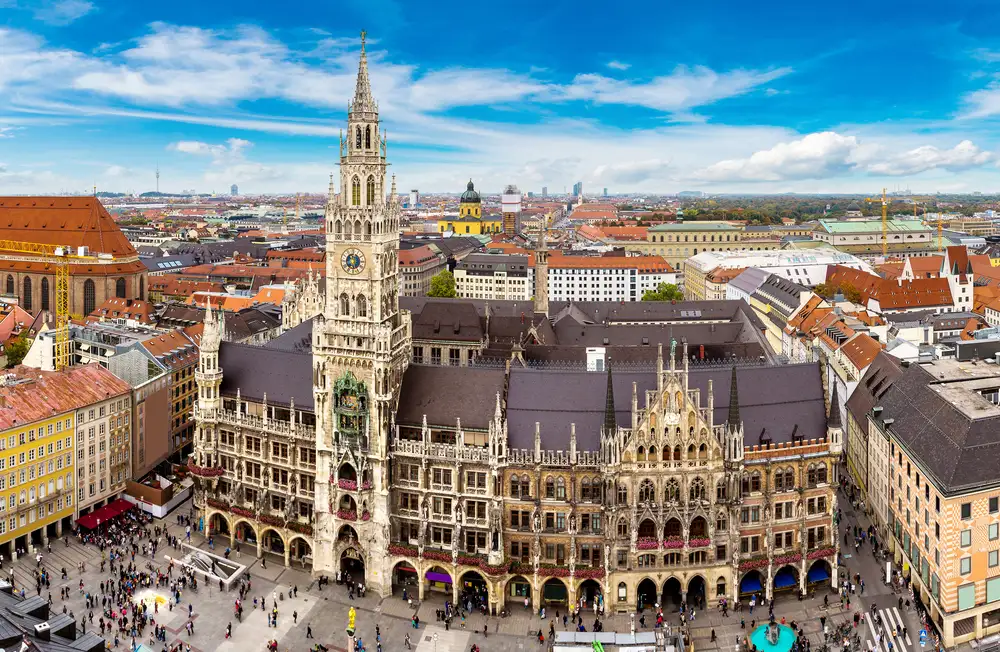
Munich
Arriving in Munich, you would be forgiven for thinking you were on the set of a movie about old Bavaria. At the Old Town beer halls, barmaids laced in dirndl dresses serve up frosty Helles lager, as oom-pah music drifts across the Marienplatz square. Men in lederhosen and checked shirts merrily give toasts as they knock glasses, or steins, as they’re known here. They sit at tables laden with wurst sausage and giant pretzels oozing with herby butter. This is Germany’s Germany, a place where folk traditions never stopped, and the revelry doesn’t either. Even when it isn’t Oktoberfest, the town’s notorious beer-drinking celebration, Munich is always happy to show you a good time. Simply cast your eyes around the lavish, gilded banquet hall at the Munich Residenz, the 13th-century Wittelsbach palace. You’ll see Munich has been impressing guests for centuries. Or, swing by the BMW Museum and check out the classic German cars. They even let you sit inside to test out the new models. At the city’s English Gardens, surfers ride waves on one of the park’s rivers. Munich is filled to the brim with this kind of pure-hearted German fun.

Learn About Munich
Build Munich Trip

Heidelberg
Heidelberg is buried deep in the forests of southwest Germany. Flanking both sides of the Neckar River, Heidelberg's red and white baroque old town looks like something from a book of folktales. On the hillside above the town, you'll see the looming, tumbledown remains of Heidelberg's Gothic-Renaissance castle, Heidelberger Schloss. The subject of strange local legends, Heidelberg Castle was once home to knights, a famous court jester, and even a witch. It is said the first person who pulls out an iron ring embedded in one of the great doors will be the castle's true owner. Surely on your visit, it's worth a try? Across the river, follow in the footsteps of scholars on a hiking trail known as The Philosophers’ Way. Heidelberg University is the oldest in Germany, and its leafy, temple-like campus contributes to the gentle, contemplative atmosphere of the town. A poetic city with the dreamy feel of a watercolor painting, it's no wonder Heidelberg inspired writers like Mark Twain and Johann Wolfgang von Goethe. The city has even been recognized by UNESCO as a City of Literature. Especially on misty, grey days, Heidelberg has a way of sweeping you up in its romanticism.

Learn About Heidelberg
Build Heidelberg Trip

Frankfurt
Dubbed ‘Mainhatten’ for its glass highrises, financial prowess, and proximity to the Main River, Frankfurt offers a fascinating glimpse into the ‘engine room’ of Europe’s economy with an unexpected twist. Among the glass and steel buildings, the old-worldly Römerberg square will give you a double-take. The square’s 15th-century half-timbered houses, old statues, and church spires contrast dramatically against the modern 21st-century skyscrapers beyond. If you visit at Christmas, the Römerberg is truly special, aglow with the light of the tallest Christmas tree in Germany. The square fills with stalls selling handicrafts, and the air is scented with hot apple wine, honey, and cinnamon. Delve deeper into Frankfurt and you’ll find a substantial museum district, the Museumsufer (Museum Embankment). This area features a cluster of twelve museums on either side of Main River. This includes the Städel, home to Tischbein’s famous painting of renowned writer Johann Wolfgang von Goethe, one of Frankfurt’s most prestigious sons. The more time you spend in Frankfurt, the more you’ll discover a highly cultured city lurking beneath its glass facades. If you have the time, Frankfurt is certainly worth a second look.

Learn About Frankfurt
Build Frankfurt Trip
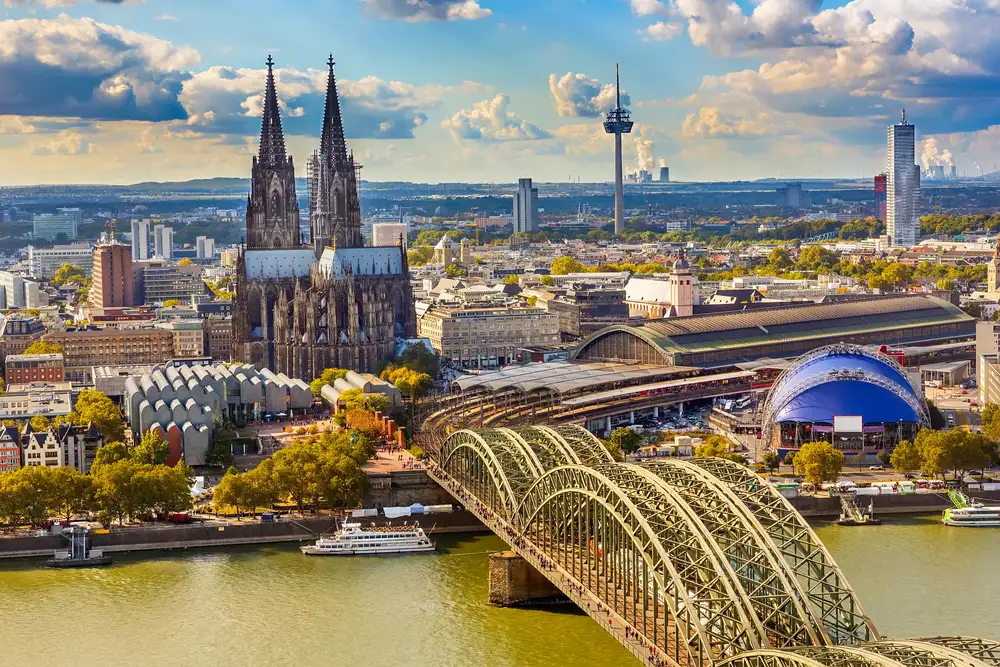
Cologne
As you travel through Western Germany, Cologne is a cheerful, fun city to stop for a night or two. Flanking both sides of the Rhine river, Cologne's delightful architectural pastiche reflects the breezy anything-goes attitude of its inhabitants. Like most German cities, Cologne took a hit during WWII, losing some of its old-world buildings and neighborhoods. However, thanks to the endurance of the Cologne Cathedral and iconic Hohenzollern Bridge, the city has kept its identity close to hand. Sometimes quite literally in the form of a glass of sparkling Kölsch local beer. A visit to Cologne should always include paying a call to its eponymous Cathedral. A sensational, Gothic behemoth of a building and a UNESCO Heritage Site, Cologne Cathedral will get you right in the heart, humbling all who enter it. Just outside the cathedral, the Hohenzollern Bridge spans the Rhine, with three iron truss arches looping over the river like the bounces of a skimming stone. After wandering the riverside, if you're looking for some indulgence, Cologne's Chocolate Museum is an eternally popular choice. Maybe you'll be under the influence of the cocoa, but at the end of a day in Cologne, life can seem pretty sweet.

Learn About Cologne
Build Cologne Trip
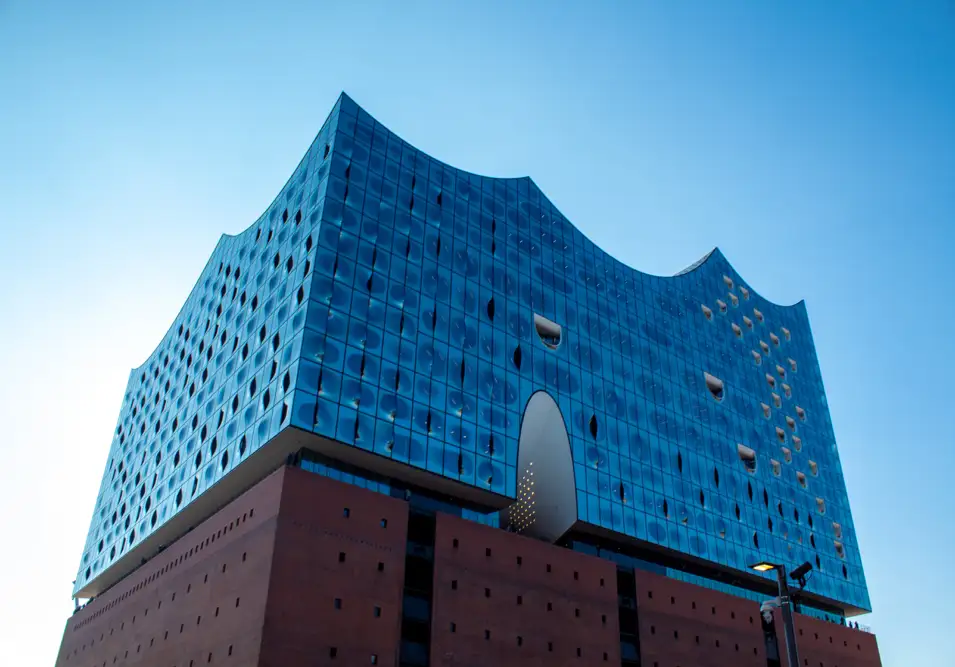
Hamburg
Compared to other German cities, Hamburg has a moody, nautical charisma all of its own. Despite being battered throughout history by floods, fires, and bombs, Hamburg has always held its head up high. Resilience is in the air in Hamburg, along with the briny smell of the North Sea. In recent years Hamburg has garnered a reputation for commerce and nightlife. Frequent travelers whisper that Hamburg is Germany’s ‘undiscovered’ city, the place to go for a little business and a lot of fun. Known as Germany’s ‘gateway to the world’, ships dock in Hamburg as they haul cargo up and down the Elbe River. The city thrives as Germany’s primary seaport and has been a center of trade since the middle ages. Its affluence shows in the 19th-century brick warehouses, flourishing restaurant scene, and recently constructed Elbphilharmonie concert hall, which floats majestically in the harbor, part ship and part island. Hamburg is a city for those who like to live large - in a cultured, German kind of way. Attend a performance at the orchestra, cruise on a boat around the Außenalster Lake, or have a night on the Reeperbahn, the Vegas-like strip where the Beatles once performed. Whatever you do in the city, Hamburg will make you look twice and see Germany from a totally different point of view.

Learn About Hamburg
Build Hamburg Trip
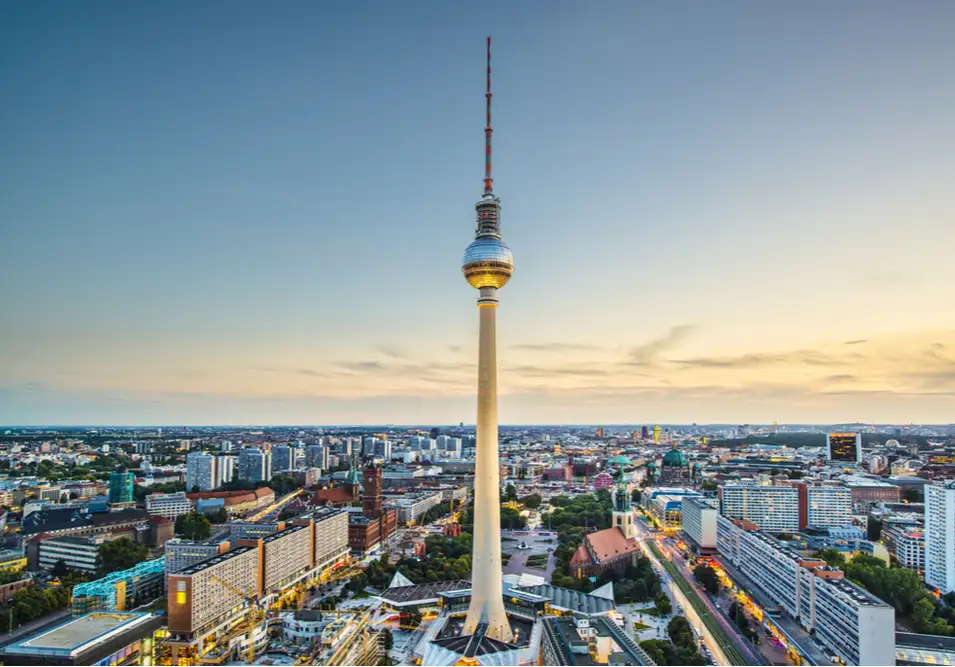
Berlin
Since the fall of its notorious wall, Berlin’s unification has seen it go from strength to strength. No wonder the city feels like it hasn’t stopped partying since the 1990s. There is so much to celebrate here. Fueled by the robust economy, a thriving tech scene, and straight-up German bonhomie, when you step into Berlin you’ll soon be caught up in its spirit. For all this gusto, Berlin hasn’t forgotten its troubled past. A visit to Berlin is to bear witness to history. Portions of the wall remain intact, and the city’s Jewish Museum offers a detailed, emotional examination of the Holocaust. Inside the reconstructed Reichstag, every attempt has been made to preserve the parliament’s beleaguered history. The buildings' glass dome addition feels less like a triumphal crown and more like a freshly healed battle scar. Days in Berlin are easily spent wandering from a cafe to the cultural institutions on Museum Island, or over to the Charlottenburg Palace. By night, crowds wander through the booming bars and nightclubs or gaze upon the floodlit Brandenburg Gate and Victory Column monuments. An international city that can offer something to everyone, Berlin is an unmissable stop on your German journey.

Learn About Berlin
Build Berlin Trip

Dresden
Nearly every wall and rooftop in Dresden seems to be finished with a flourish. Defined by its ornamental baroque architecture, a power statement of Saxon royalty, Dresden is made all the more miraculous considering the city was leveled by firebombing in WWII. After the war, the city was reconstructed, brick by painstaking brick. Even under East German-Soviet rule, which usually eschewed frivolous design, buildings like the Semper Opera House were pieced back to their former glory. Restoration of the majestic Zwinger Palace and bell domed Church of Our Lady slowly followed, with the Frauenkirche only fully repaired in 2005. Arguably there is no other city in Europe that cherishes its hard-won architecture as much as Dresden. Although it is a compact city, so many of its buildings will stop you in your tracks that architecture fans will easily lose a whole day in the Old Town area. Especially during the winter months, Dresden sparkles with a joyous, uplifting ambiance. The city is recognized as having the best-ever Christmas market in all of Europe. Between the twinkling lights, the scent of hot wine and gingerbread, and the towering Christmas tree, it’s worth going out of your way to see Dresden at this time of year.

Learn About Dresden
Build Dresden Trip

Nuremberg
One of the most authentic, storied German destinations, Nuremberg's picturesque old town, glorious castle, and buzzing Christmas Market makes this city a time-true classic. The ideal gateway to old Bavaria, Nuremberg offers a primer in German history before you embark on the lovely journey through old Bavaria, known as the Romantic Road. Considered the capital of the Holy Roman Empire in the middle ages, Nuremberg would have felt like the center of the world as a procession of kings and emperors passed through its magnificent gates. When the German Renaissance came, Nuremberg was at its heart. Albrecht Dürer, the great German master artist, was born here, and Martin Luther called Nuremberg Germany's 'eyes and ears'. Skip forward a few centuries, and the city took a dark turn, as Nuremberg became a gathering point for the German National Socialists. Slightly outside of town, you can still find the Nazi Party Rallying Grounds, a sobering reminder of the not so distant past. If it all gets too heavy, you can end the day with a glass of rotbier (red beer) and mull it over. Nuremberg is a must-see for anyone who wants to delve into Germany's past.

Learn About Nuremberg
Build Nuremberg Trip

Munich
Arriving in Munich, you would be forgiven for thinking you were on the set of a movie about old Bavaria. At the Old Town beer halls, barmaids laced in dirndl dresses serve up frosty Helles lager, as oom-pah music drifts across the Marienplatz square. Men in lederhosen and checked shirts merrily give toasts as they knock glasses, or steins, as they’re known here. They sit at tables laden with wurst sausage and giant pretzels oozing with herby butter. This is Germany’s Germany, a place where folk traditions never stopped, and the revelry doesn’t either. Even when it isn’t Oktoberfest, the town’s notorious beer-drinking celebration, Munich is always happy to show you a good time. Simply cast your eyes around the lavish, gilded banquet hall at the Munich Residenz, the 13th-century Wittelsbach palace. You’ll see Munich has been impressing guests for centuries. Or, swing by the BMW Museum and check out the classic German cars. They even let you sit inside to test out the new models. At the city’s English Gardens, surfers ride waves on one of the park’s rivers. Munich is filled to the brim with this kind of pure-hearted German fun.

Learn About Munich
Build Munich Trip

Heidelberg
Heidelberg is buried deep in the forests of southwest Germany. Flanking both sides of the Neckar River, Heidelberg's red and white baroque old town looks like something from a book of folktales. On the hillside above the town, you'll see the looming, tumbledown remains of Heidelberg's Gothic-Renaissance castle, Heidelberger Schloss. The subject of strange local legends, Heidelberg Castle was once home to knights, a famous court jester, and even a witch. It is said the first person who pulls out an iron ring embedded in one of the great doors will be the castle's true owner. Surely on your visit, it's worth a try? Across the river, follow in the footsteps of scholars on a hiking trail known as The Philosophers’ Way. Heidelberg University is the oldest in Germany, and its leafy, temple-like campus contributes to the gentle, contemplative atmosphere of the town. A poetic city with the dreamy feel of a watercolor painting, it's no wonder Heidelberg inspired writers like Mark Twain and Johann Wolfgang von Goethe. The city has even been recognized by UNESCO as a City of Literature. Especially on misty, grey days, Heidelberg has a way of sweeping you up in its romanticism.

Learn About Heidelberg
Build Heidelberg Trip

Frankfurt
Dubbed ‘Mainhatten’ for its glass highrises, financial prowess, and proximity to the Main River, Frankfurt offers a fascinating glimpse into the ‘engine room’ of Europe’s economy with an unexpected twist. Among the glass and steel buildings, the old-worldly Römerberg square will give you a double-take. The square’s 15th-century half-timbered houses, old statues, and church spires contrast dramatically against the modern 21st-century skyscrapers beyond. If you visit at Christmas, the Römerberg is truly special, aglow with the light of the tallest Christmas tree in Germany. The square fills with stalls selling handicrafts, and the air is scented with hot apple wine, honey, and cinnamon. Delve deeper into Frankfurt and you’ll find a substantial museum district, the Museumsufer (Museum Embankment). This area features a cluster of twelve museums on either side of Main River. This includes the Städel, home to Tischbein’s famous painting of renowned writer Johann Wolfgang von Goethe, one of Frankfurt’s most prestigious sons. The more time you spend in Frankfurt, the more you’ll discover a highly cultured city lurking beneath its glass facades. If you have the time, Frankfurt is certainly worth a second look.

Learn About Frankfurt
Build Frankfurt Trip

Cologne
As you travel through Western Germany, Cologne is a cheerful, fun city to stop for a night or two. Flanking both sides of the Rhine river, Cologne's delightful architectural pastiche reflects the breezy anything-goes attitude of its inhabitants. Like most German cities, Cologne took a hit during WWII, losing some of its old-world buildings and neighborhoods. However, thanks to the endurance of the Cologne Cathedral and iconic Hohenzollern Bridge, the city has kept its identity close to hand. Sometimes quite literally in the form of a glass of sparkling Kölsch local beer. A visit to Cologne should always include paying a call to its eponymous Cathedral. A sensational, Gothic behemoth of a building and a UNESCO Heritage Site, Cologne Cathedral will get you right in the heart, humbling all who enter it. Just outside the cathedral, the Hohenzollern Bridge spans the Rhine, with three iron truss arches looping over the river like the bounces of a skimming stone. After wandering the riverside, if you're looking for some indulgence, Cologne's Chocolate Museum is an eternally popular choice. Maybe you'll be under the influence of the cocoa, but at the end of a day in Cologne, life can seem pretty sweet.

Learn About Cologne
Build Cologne Trip

Hamburg
Compared to other German cities, Hamburg has a moody, nautical charisma all of its own. Despite being battered throughout history by floods, fires, and bombs, Hamburg has always held its head up high. Resilience is in the air in Hamburg, along with the briny smell of the North Sea. In recent years Hamburg has garnered a reputation for commerce and nightlife. Frequent travelers whisper that Hamburg is Germany’s ‘undiscovered’ city, the place to go for a little business and a lot of fun. Known as Germany’s ‘gateway to the world’, ships dock in Hamburg as they haul cargo up and down the Elbe River. The city thrives as Germany’s primary seaport and has been a center of trade since the middle ages. Its affluence shows in the 19th-century brick warehouses, flourishing restaurant scene, and recently constructed Elbphilharmonie concert hall, which floats majestically in the harbor, part ship and part island. Hamburg is a city for those who like to live large - in a cultured, German kind of way. Attend a performance at the orchestra, cruise on a boat around the Außenalster Lake, or have a night on the Reeperbahn, the Vegas-like strip where the Beatles once performed. Whatever you do in the city, Hamburg will make you look twice and see Germany from a totally different point of view.

Learn About Hamburg
Build Hamburg Trip

Berlin
Since the fall of its notorious wall, Berlin’s unification has seen it go from strength to strength. No wonder the city feels like it hasn’t stopped partying since the 1990s. There is so much to celebrate here. Fueled by the robust economy, a thriving tech scene, and straight-up German bonhomie, when you step into Berlin you’ll soon be caught up in its spirit. For all this gusto, Berlin hasn’t forgotten its troubled past. A visit to Berlin is to bear witness to history. Portions of the wall remain intact, and the city’s Jewish Museum offers a detailed, emotional examination of the Holocaust. Inside the reconstructed Reichstag, every attempt has been made to preserve the parliament’s beleaguered history. The buildings' glass dome addition feels less like a triumphal crown and more like a freshly healed battle scar. Days in Berlin are easily spent wandering from a cafe to the cultural institutions on Museum Island, or over to the Charlottenburg Palace. By night, crowds wander through the booming bars and nightclubs or gaze upon the floodlit Brandenburg Gate and Victory Column monuments. An international city that can offer something to everyone, Berlin is an unmissable stop on your German journey.

Learn About Berlin
Build Berlin Trip
prev
next


 Map of Your Itinerary Route
Map of Your Itinerary Route
Zoom In to the cities to see your itinerary in more detail


 4.8
4.8 






